Just added to your cart


What is the Difference between A, AA, and AAA baseball?
Many baseball players you see playing in the MLB, Major League Baseball, have spent some time in their careers playing for a team in the MiLB, Minor League Baseball. The MiLB is where A, AA, and AAA come from, the different levels of playing in the MiLB.
We will explain the differences between each level, including how it works in terms of competition in the MiLB. After reading this blog, hopefully you can take away something new you have learned about the different levels MiLB baseball players can play.
Difference Between MiLB and the MLB
Now the MLB and MiLB may sound very similar, but they are different. The MLB is Major League Baseball, where the big teams you have likely heard of compete like the New York Yankees, Atlanta Braves, Chicago Cubs, and Boston Red Sox. The MiLB is Minor League Baseball which consists of smaller scale teams where baseball players are getting experience to hopefully work their way up and play in the MLB one day.
How Do Baseball Players Play in the MiLB
Each year there is a First-Year Player MLB Draft, also called the Rule 4 Draft. The draft occurs in June, which is the middle of the season for MLB teams. Each MLB team takes turns making selections in each round for the baseball players they want on their team.
Once a baseball player is selected by an MLB team during the draft, they are now considered a professional baseball player. They will then begin to negotiate a contract with that MLB team. It is likely in each of these contracts the baseball players will be negotiating with the MLB team about their salary and which MiLB team they will be playing for.
Each MLB organization or team has a set of contracted MiLB teams that they send drafted baseball players to play for. Baseball players will play in the MiLB to improve their skills and gain game experience as they work their way up to the MLB.
Very very few baseball players have the ability to start playing directly in the MLB and not play a single game in the MiLB, but it has happened. Each baseball player’s journey after being drafted to an MLB team and playing in the MiLB is different.
Some baseball players have the ability to skip a couple of levels and only spend a couple of years playing in the MiLB. They might get the opportunity to be called up to an MLB team and sometimes then called back down. For others, they might play in the MiLB for ten years before seeing the field in the MLB. Unfortunately, not all MiLB baseball players eventually get a chance to play in the MLB- some never make it.
The Different Levels of the MiLB
The MiLB, Minor League Baseball, consists of 5 different levels baseball players can play in. Each is differentiated by level of ability and the level of competition. The four different levels, and one extra division, are as follows, in order from highest and most competitive to the lowest and least competitive level,
- AAA, also called Triple-A
- AA, also called Double-A
- High-A, also called Single-A
- Low-A, also called Single-A
- Short Season and Rookie Ball
MLB Teams and their MiLB Affiliated Teams
As we mentioned before, each MLB team has a set of affiliated MiLB teams they are contracted within each of the top 4 divisions. For example, the Major League Baseball team Atlanta Braves have affiliated MiLB teams including,
- Triple-A: Gwinnett Stripers
- Double-A: Mississippi Braves
- High-A: Rome Braves
- Low-A: Augusta GreenJackets
In addition, the Arizona Diamondbacks MLB team has the following MiLB affiliated teams,
- Triple-A: Reno Aces
- Double-A: Amarillo Sod Poodles
- High-A: Hillsboro Hops
- Low-A: Visalia Rawhide
We will continue on the blog to discuss a more in-depth overview of each Milb level, starting with the lowest level of play to the highest level of play.
Rookie Ball and Short Season
MiLB Rookie ball or the rookie leagues are usually for baseball players who were recently drafted. This can include those who were drafted right out of high school and some baseball players drafted right from college after their junior season. The rookie league consists of the
- Arizona Complex League
- Florida Complex League
- Dominican Summer League.
The short season or single-A short season is similar to the rookie season in which it is a short season that starts in June and goes through early September. This is best for baseball players who were just drafted to get the opportunity to jump right into starting their professional baseball careers and play for a team.
Low-A Division Baseball
The MiLB Low-A division, also known as Single-A, usually consists of baseball players who were recently drafted to the MLB right out of high school and baseball players moving up from the rookie and short-season leagues. The baseball players get to play a full regular season consisting of 140 games over five months and spring training.
Many baseball players that have been drafted in the MLB and contracted to a team in the MiLB Single-A division, including Low-A and High-A, were put there to work on their pitching control and/or their batting consistency. Playing in the MiLBSingle-A division will give these baseball players the opportunity to focus on and improve these skills until they are good enough to play in the next division of MiLB.
There are 30 teams in the Low-A divisions that are divided into 3 MiLB leagues consisting of
- Low-A Southeast
- Low-A West.
High-A Division Baseball
The MiLB High-A division, also known as Single-A, is usually composed of baseball players who are moving up from Low-A or are experienced first-year baseball players, or sometimes first-round MLB Draft picks who played at a major college might start at this division.
Along with the division Low-A baseball, the High-A division plays a full regular season of 140 games over five months, including spring training as well. The vast majority of the teams in this league are owned by the MLB parent clubs and have the opportunity to use their spring training complexes.
In the High-A division, there are 30 teams divided into three different MiLB leagues, which consist of
- High-A East
- High-A Central
- High-A West
AA Division Baseball
The MiLB AA division, also known as Double-A, is where you find difficult competition and a lot of talent. These are the baseball players that have the potential to be playing in the MLB within very few seasons. It is very difficult for baseball players to make it to the Double-A level because the competition is much tougher, which is why it is considered the division that weeds out most MiLB baseball players.
Baseball players who get the opportunity to play in the Double-A division have to have a strong physical ability as well as mental ability. The division is usually composed of players who have worked their way up from lower divisions, veteran baseball players from foreign leagues with professional baseball experience, and occasionally you might see an MLB Draft pick placed directly in the Double-A division, but it is rare.
The baseball players playing in the MiLB Double-A division usually see higher salaries and have the possibility to jump straight to playing in the MLB and not playing in the next division. Some of the baseball players in the Double-A decision might even have MLB experience.
In the Double-A division, there are also 30 teams, each divided into three different MiLB leagues, which include
- Double-A Central
- Double-A Northeast
- Double-A South
AAA Division Baseball
The MiLB AAA division, also known as Triple-A, is where you find baseball players who are elite, talented baseball players ready to play in the MLB. The Triple-A division is full of baseball players who have MLB experience, rising stars who are ready to see the MLB field, and veteran MLB players that might be rehabbing an injury.
It is important for us to be aware of the fact that there is always the possibility of moving up and moving back down throughout divisions. This is why the Triple-A division is referred to as the “spare parts” for MLB teams. Sometimes baseball players aren’t quite ready or maybe not needed positional-wise quite yet, so they play in the Triple-A division with the possibility of being called up to the MLB later in the season.
MiLB Tiple-A division teams are a favorite among fans because they can attend games at a lower price than MLB games and still see elite and talented baseball players compete.
In the Triple-A division, there are 30 teams like the other division, but they are only divided into two different MiLB leagues, which are
- Triple-A East
- Triple-A West
As you can see, the journey to play in the MLB is difficult and can be lengthy for some. Professional baseball players who were drafted by MLB teams get the opportunity to improve their skills and work their way up and climb the ladder through MiLB to eventually reach the MLB. After reading this blog, hopefully you understand the different levels of MiLB baseball including A, AA, and AAA.
If you found this blog helpful, interesting, or informative, be sure to check out Ryan Weiss’s coaching program and his other training programs to elevate your game.
- Share Share on Facebook
- Tweet Tweet on Twitter
- Pin it Pin on Pinterest
- Choosing a selection results in a full page refresh.
- Press the space key then arrow keys to make a selection.
Travel Baseball’s National Team Classification System
What is divlevel.
DivLevel is travel baseball’s national team division classification system. Travel baseball teams from across the nation are able to self-classify their team in one of three division classifications: Division 1 ( D1 ), Division 2 ( D2 ) or Division 3 ( D3 ). DivLevel promotes the concept of LEVEL-PLAY in travel baseball, through one unified system of team classification used throughout the industry.
The DivLevel classifications will increasingly be used by travel baseball tournament providers from across the country in an effort to streamline the varying and often confusing terminology currently being used. DivLevel will also be the basis for Baseball Youth’s team ranking system , where teams from all levels of play will be ranked versus others nationwide.
DivLevel was created by the innovative and industry-leading minds at BASEBALL YOUTH – the Nation’s Largest Youth Baseball Network! The various divisions and levels currently being used and promoted by tourney providers in travel baseball have quickly become confusing to the most important groups it serves… the coaches, players and fans!
The team at Baseball Youth believes it is time to take a proactive step in unifying the classification process, which will drastically benefit both travel baseball teams and tourney providers. The DivLevel system is built around the idea of promoting ONE set of universal division classifications: D1-D2-D3. These three division classifications are extremely easy to explain to parents and players and for coaches to understand as well!
By classifying with DivLevel, you are joining the movement to simplify the tournament process, increasing opportunities for equal and adequate competition during tournament play, and bring the focus back to the GAME! Together we will unify the industry, and enhance the overall EXPERIENCE for our players, coaches, and families.
DivLevel is FREE to classify your team and EASY to navigate. It only takes 1-2 minutes to classify your team for the entire season. If at any point in the season you feel that your team needs to move up or down a level, simply log in and change your classification!
Through your team’s DivLevel classification, you will have the chance to be featured in Baseball Youth Magazine and on Baseball Youth social media channels! In addition to these national EXPOSURE opportunities, your team will automatically be in the system for future Baseball Youth team rankings !
DivLevel allows coaches to choose the best division/level for their particular team, based on a candid assessment of their team’s skill level. DivLevel is made up of 3 very easy-to-understand division levels… Division 1 (D1), Division 2 (D2) or Division 3 (D3) as follows:
D1 – Major/All-Levels of AAA, Gold, Elite/Advanced, Competitive Nationally and Super-Competitive Regionally
D2 – Medium AA/High AA, Silver, High-Level Intermediate, Competitive Regionally and Super-Competitive Locally
D3 – Low AA/All-Levels of A, Bronze, Low-Level Intermediate/Beginner, Competitive Locally
Division 1 (abbreviated D1 ) is the highest level of play within Baseball Youth’s DivLevel classification system. This level is best suited for teams considered as Major/All-Levels of AAA, Gold or Elite/Advanced. Teams classified as D1 should be playing the majority of their games against other regionally strong and/or nationally ranked opponents.
Division 2 (abbreviated D2 ) is the middle level of play within Baseball Youth’s DivLevel classification system. This level is best suited for teams considered as Medium AA/High AA, Silver or High-Level Intermediate. Teams classified as D2 should be playing the majority of their games against other mid-level local and regionally based opponents of a similar classification.
Division 3 (abbreviated D3 ) is the lowest level of play within Baseball Youth’s DivLevel classification system. This level is best suited for teams considered as Low AA/All-Levels of A, Bronze or Low-Level Intermediate/Beginner. Teams classified as D3 should be playing the majority of their games against other local and lower-level regionally based opponents of a similar classification.
CALL US : 1-800-559-2849
Thank you for contacting baseball youth, copyright all rights reserved © 2018 privacy policy.
Michigan tourist attractions
Travel Baseball Levels: A Comprehensive Guide

Short answer travel baseball levels:
Travel baseball levels refer to the various competitive divisions or tiers in youth baseball that involve teams traveling to compete against others from different regions. This typically includes age-based divisions, such as 8U, 10U, 12U, etc., and advanced levels like AAA or Major. The skill level and competitiveness increase as players move up the ladder of travel baseball levels.
Understanding Travel Baseball Levels: A Step-by-Step Guide
Travel baseball has become increasingly popular among young athletes, offering a springboard for talented players to showcase their skills and potentially pave their way to college or even professional careers. However, navigating the intricate world of travel baseball can be quite daunting for both players and parents alike. With various levels and divisions, it’s crucial to have an in-depth understanding of what each level entails in order to make informed decisions about participation. In this step-by-step guide, we shall unravel the complexities surrounding travel baseball levels, providing you with a comprehensive overview that will serve as your compass throughout this exhilarating journey.
Step 1: Grassroots – The Foundation of Travel Baseball Before delving into the intricacies of different levels, let’s start at the grassroots level. Here is where most aspiring ballplayers begin their journey. Often comprised of local recreational leagues or community teams, grassroots programs often prioritize participation and learning over intense competition. Skill development and fostering a love for the game are key objectives during this phase.
Step 2: Local Tournaments – Testing Your Mettle As young athletes progress in their skills and experience, they may start participating in local tournaments organized either by leagues or individual teams . These tournaments usually attract other local talent, allowing players to gain exposure beyond just their regular season games. This is a crucial stepping stone towards more competitive levels where they can gauge themselves against similarly skilled opponents within their region.
Step 3: Regional Travel Teams – Expanding Horizons Regional travel teams represent the next tier on the ladder of travel baseball levels. Usually made up of talented players from neighboring towns or counties, these teams compete against each other within a larger geographical area such as a state or several states in close proximity. Players at this level must possess more refined skills and demonstrate consistent performance to secure spots on these sought-after squads.
Step 4: State-Level Competition – Elevating Your Game At this stage, we enter the realm of state-level competition. Players who have proven themselves in regional travel teams can advance to represent their state in tournaments against other states. These competitions often attract college scouts and provide invaluable exposure for players aspiring to pursue baseball at the collegiate level. The intensity of the games and talent pool expands as players go head-to-head with top-tier opponents from different corners of the state.
Step 5: National Showcase Teams – Competing on a Grand Stage National showcase teams are über-competitive programs that assemble elite players from across the country. Often scouted by college recruiters, these teams participate in high-profile tournaments and showcases where players can truly shine on a national stage. Joining a showcase team is a significant achievement, as it signifies recognition amongst the best-of-the-best in youth baseball .
Step 6: Collegiate Scouting and Professional Opportunities For those fortunate enough to make an impression while playing for national showcase teams, opportunities to play baseball at esteemed colleges or universities begin to emerge. College coaches actively seek out talented prospects during these showcase events, enabling players to potentially secure scholarships or spots on collegiate rosters. The ultimate dream for some may even extend beyond college, as exceptional talents catch the attention of professional scouts scouting potential Major League Baseball prospects.
Navigating Through Travel Baseball Levels: Find Your Fit! Understanding travel baseball levels is crucial when deciding which path aligns best with your aspirations and abilities. It is important not only to gauge one’s own skill level realistically but also consider personal ambitions regarding education, commitment levels required, financial considerations, and overall enjoyment of the game.
Remember that regardless of which level you find yourself in today or aspire to reach tomorrow, success in travel baseball ultimately hinges on dedication, love for the sport, continuous growth both on and off the field, as well as enjoying every step of this exhilarating journey that fuels dreams and shapes lifelong passions. So lace up your cleats, swing your bat high with conviction, and embark on this epic adventure that is travel baseball!
How to Navigate the Different Travel Baseball Levels
Whether you’re a young athlete looking to take your baseball skills to the next level or a parent trying to understand the complex world of travel baseball, navigating through the different levels can be both exciting and overwhelming. In this blog post, we will guide you through the various travel baseball levels and help you understand how to make the most informed decisions for your baseball journey.
1. Recreational Leagues: At the base of the travel baseball pyramid are recreational leagues. These leagues focus on providing a fun and introductory experience for young athletes who are new to the sport or simply looking for a less competitive environment. Recreational leagues emphasize participation, skill-building, and sportsmanship over intense competition.
2. Select Teams: Select teams usually form within local little league programs or community organizations. They offer a slightly higher level of competition than recreational leagues while still maintaining an emphasis on player development and enjoyment of the game. Select teams typically participate in tournaments within their region but may also play against other select teams from neighboring states.
3. Competitive Travel Teams: As players progress in their skills and commitment, they might transition into competitive travel teams . These teams participate in more advanced tournaments that often require some travel outside their immediate area . Competitive travel teams focus on developing talent, teamwork, and winning games while still prioritizing player development as they aim for stronger competition at regional or state championships .
4. Showcase Teams: Once players reach high school age, showcase teams become an option worth considering if they aspire to play college baseball or even beyond. Showcase teams compete at highly scouted tournaments where players have opportunities to showcase their abilities in front of college coaches and professional scouts. Getting noticed by these influential figures significantly increases chances of receiving scholarship offers or even being drafted after high school.
5. National Travel Teams: At the pinnacle of travel baseball are national travel teams often sponsored by major sports brands like Nike or Under Armour. These elite-level teams consist of top-tier players from across the country, and they compete in prestigious national tournaments. Being invited to play for a national team is a significant achievement and often serves as a stepping stone towards playing collegiate or professional baseball.
Navigating through these various levels can be challenging, but here are some tips to help you make informed decisions:
1. Assess Player Skill Level: Honest self-assessment of player skills and performance level is crucial. Understanding where your skills currently stand will guide you towards the appropriate level of competition that will challenge you to improve without overwhelming you.
2. Seek Recommendations: Speak with experienced coaches, teammates, or league officials who can offer knowledgeable insights regarding your skill level and potential growth opportunities. Seeking recommendations from trusted sources can help you find the most suitable travel baseball program or team.
3. Attend Tryouts: Taking part in tryouts for different travel teams allows players to showcase their skills while getting a sense of the expectations and competition level within each organization. It’s essential to participate in multiple tryouts to get multiple perspectives on where you might fit best.
4. Consider Cost, Time Commitment, and Travel Requirements: Each travel baseball level requires varying financial investments, time commitments, and travel requirements. Make sure you fully understand these factors before committing yourself or your child to a particular team or program.
In summary, navigating through the different levels of travel baseball requires careful consideration of player skill level, recommendations from trusted sources, participation in tryouts, and understanding the associated costs and commitments. By taking these factors into account, both athletes and parents can make well-informed decisions that will enhance their baseball journey while providing an enjoyable and rewarding experience at any level of play.
Exploring Travel Baseball Levels: FAQs Answered
When it comes to the world of baseball, there are few things as exciting as travel baseball. It’s a whole different ballgame compared to your average little league or high school teams . But what exactly is travel baseball? What are the different levels and how do they work? Don’t worry – we’ve got all your burning questions about exploring travel baseball levels answered right here.
First off, let’s start with the basics. Travel baseball is essentially a competitive level of play where teams from different regions or even states come together to compete against each other. Unlike recreational leagues, where anyone can join regardless of skill level, travel teams require players to go through tryouts in order to secure their spot on the roster. These teams often have more intensive practice schedules and participate in tournaments across the country.
Now, let’s dive into the different levels of travel baseball. The three main tiers you’ll encounter are known as AAU (Amateur Athletic Union), USSSA (United States Specialty Sports Association), and AABC (American Amateur Baseball Congress). Each of these organizations has its own set of rules and regulations, which makes for some interesting dynamics on the field.
AAU is perhaps the most well-known and widely recognized organization for travel baseball. With a strong emphasis on player development and college exposure, AAU teams provide aspiring young athletes with an elite-level competition experience. This level usually attracts highly skilled players who have already honed their skills playing at a local or regional level.
Next up is USSSA – an organization that prides itself on inclusivity and versatility. USSSA caters to a wider range of skill levels and offers divisions based on age groups rather than strict talent requirements. This allows players who may be new to travel baseball or still developing their skills to get involved without feeling overwhelmed by top-tier competition.
Lastly, we have AABC – an organization that focuses on traditional values while maintaining high standards of play. It promotes a more old-school approach to the game, with an emphasis on fundamentals and sportsmanship. AABC teams often participate in local or regional leagues and work their way up through different tournaments to showcase their skills on a larger stage.
Now that you have a better understanding of the different levels, you may be wondering how players move from one level to another. Generally, it’s based on skill level and performance. As players gain experience and refine their abilities on the field, they might catch the attention of coaches or scouts at higher levels who offer them opportunities to elevate their game .
Ultimately, choosing which level of travel baseball is right for you or your child depends on various factors such as skill level, commitment level, and personal goals. It’s essential to consider your own abilities and aspirations before making a decision. Remember that regardless of the level you choose, travel baseball can provide invaluable experiences, lifelong friendships, and opportunities for growth both on and off the field.
In conclusion, exploring travel baseball levels can be an exciting endeavor for any aspiring ballplayer. From AAU to USSSA and AABC, each organization offers its unique take on the sport while providing players with valuable opportunities to hone their skills and compete against top-tier talent. So lace up those cleats, grab your glove, and get ready for an unforgettable journey in travel baseball!
Unraveling the Mystery of Travel Baseball Levels
In the realms of youth sports, few things generate as much mystery and intrigue as travel baseball levels. Parents and players alike find themselves navigating a complex web of teams, divisions, and confusing terminology. Is it AAA or Majors? A or AA? What does it all mean? Today, we’re unraveling the mystery of travel baseball levels to shed light on this enigmatic world.
At first glance, one might assume that travel baseball simply refers to any team that travels to compete against other teams outside their local area. While this is somewhat true, there’s much more to it than meets the eye. Travel baseball is a highly competitive branch that goes beyond recreational leagues and aims to provide skilled young athletes with enhanced opportunities for growth and exposure.
So, let’s dive into this intricate world by dissecting some common terms associated with travel baseball levels:
1. Recreational Leagues: These are usually where kids start their baseball journeys – casual games played within local towns or neighborhoods. The focus here is more on fun than competition, and players of all skill levels can participate.
2. Select Baseball: The first step up from recreational leagues, select baseball involves tryouts and slightly more advanced gameplay compared to traditional community-centered leagues. However, select teams typically only compete locally without extensive traveling .
3. Travel Baseball: Here’s where things start to get serious! Travel baseball encompasses teams that go beyond playing within their immediate vicinity. These teams often represent specific regions but may occasionally venture further afield for tournaments or higher-level competitions.
4. Division Levels: Within travel baseball, you’ll come across different division levels denoted by letters such as A, AA, AAA, and sometimes even Majors or Elite categories. Think of these as escalating tiers within the sport. Each level signifies increasing skill requirements and competitiveness.
5. A Level: This represents the introductory stage in travel baseball where aspiring players gain experience at a beginner level of competition. It’s important to note that even at this level, players have usually honed their skills beyond what’s typically seen in recreational leagues.
6. AA Level: Consider this the intermediate stage of travel baseball, where players showcase a higher skill set and are exposed to more challenging gameplay. Competition intensifies as teams face off against other AA-level opponents.
7. AAA Level: AAA signifies a highly competitive stage of travel baseball, close to the pinnacle of achievement for many aspiring young athletes. At this level, players have typically demonstrated exceptional skills and dedication, making it a stepping stone towards even higher divisions or elite levels.
8. Majors or Elite Levels: These are the top echelons within travel baseball, reserved for truly exceptional talent and commitment levels. Players competing at these levels are often scouted by college recruiters or professional organizations since it serves as an avenue for exposure and future advancement in their baseball careers.
So there you have it – the mystery of travel baseball levels unraveled! As parents and players navigate through these different tiers, it’s crucial to remember that growth and development should always take precedence over sheer competitiveness. Each level offers unique opportunities for young athletes to refine their skills, forge lasting friendships, and create memories that will last a lifetime. So go ahead, step onto the field of dreams, embrace the challenge, and enjoy every moment on your travel baseball journey!
From Beginners to Elite Players: A Breakdown of Travel Baseball Levels
Are you a baseball enthusiast looking to take your game to the next level? If so, you may have heard about travel baseball and its various levels. Whether you’re just starting out or consider yourself an elite player, understanding these levels is crucial in determining the right fit for your skills and aspirations. In this blog post, we will delve into the different travel baseball levels, from beginners to elite players.
1. Beginners Level: For those embarking on their journey into travel baseball, the beginner’s level is where it all begins. This is typically suited for young players with minimal experience in competitive play but possess a love for the game and a desire to improve. Coaches at this level focus on developing fundamental skills such as throwing, catching, hitting, and baserunning while emphasizing teamwork and sportsmanship.
2. Intermediate Level: Moving up the ladder, intermediate-level travel teams attract players who have acquired some experience in competitive leagues or previous seasons of travel ball. Here, players are expected to demonstrate more advanced techniques and refine their skills. Coaches concentrate on tactical aspects of the game like situational awareness, positioning strategies, defensive schemes as well as introducing complex offensive plays.
3. Advanced Level: Aspiring athletes aiming for higher competition join advanced-level travel teams where proficiency meets ambition. Skill sets here are honed to a finer degree with rigorous training programs aimed at preparing players for demanding game scenarios. At this level, practices become more focused on position-specific drills, intricate offensive strategies such as hit-and-runs or steal signs while placing importance on pitching accuracy and velocity.
4. Elite Level: The pinnacle of travel baseball lies within elite-level teams where only the finest talents showcase their skills alongside individuals equally driven towards reaching their maximum potential. Elite-level players possess exceptional athleticism matched with high-level technical proficiency encompassing all facets of the game – fielding expertise unmatched raw speed, hitting consistency, and pitching dominance. In addition to demanding practices, players at this level often participate in high-profile tournaments and receive exposure to scouts for college and professional teams.
It’s essential to note that while each level represents a distinct progression in skill and commitment, the journey does not have a definitive ceiling. Continuous improvement is the foundation of travel baseball, allowing players to constantly push their limits and strive for higher levels of competition.
Travel baseball provides an excellent platform for players with aspirations to pursue collegiate or professional careers in the sport. However, it’s crucial to find the right fit for your skills and goals. Consult with coaches, attend tryouts, and assess your abilities objectively to determine which level will provide the best opportunity for growth and advancement.
In conclusion, travel baseball offers a path for beginners to transform into elite players through progressive levels of skill development and competitive play. Whether you’re just starting out or have dreams of standing on the mound as a future MLB star, understanding the breakdown of these travel baseball levels empowers you to make informed decisions about your athletic journey. So lace up those cleats, grab your bat, and get ready to take on the challenge – no matter what level you belong to!
Everything You Need to Know About Travel Baseball Levels
Introduction: Travel baseball has become one of the most popular forms of youth sports in recent years. With countless parents and players investing their time, money, and energy into this high-level competition, it’s essential to comprehend the various levels within travel baseball. In this blog post, we will provide you with a detailed breakdown of everything you need to know about travel baseball levels.
1. Recreational Level: The first level in the travel baseball hierarchy is the recreational level. This level is perfect for beginners who want to enjoy the game without a heavy commitment or intense competitiveness. At this stage, emphasis is placed on skill development, teamwork, and having fun rather than winning championships. Oftentimes referred to as “Sunday Leagues,” recreational teams typically play games on weekends while still providing a glimpse into organized competition.
2. Select Level: Moving up the ladder, we find ourselves at the select level of travel baseball. These teams are more competitive than recreational leagues and usually require tryouts or invitations to join. Select teams offer players an opportunity to take their skills and commitment to the next level while maintaining a somewhat flexible schedule compared to higher tiers.
3. Elite Level: Once players have mastered the select level, they may aspire to reach the elite level of travel baseball – where things get serious! Elite teams consist of highly skilled athletes who possess above-average abilities at all aspects of the game – hitting, fielding, pitching, and base-running alike. Players at this stage typically participate in numerous tournaments throughout their season against top competition from various regions.
4. Showcase Level: Next comes the showcase level – a platform specifically designed for college recruiters and professional scouts to observe talent firsthand. Showcase events attract high school-aged players who aim to earn scholarships or even get drafted by professional organizations. At showcases, athletes showcase their individual skills through standardized drills like running 60-yard dashes or demonstrating accuracy from different positions.
5. National Level: At the top of the travel baseball pyramid, we have the national level. This tier is reserved for the crème de la crème of youth baseball who compete on a national scale. National teams frequently travel long distances to partake in prestigious tournaments against other elite players from across the country. Being selected for a national team is an impressive accomplishment that brings recognition and opens doors to future opportunities.
Conclusion: As travel baseball continues gaining popularity, understanding its different levels becomes essential for parents and players looking to navigate this competitive landscape. Whether your child is just starting or aiming for a future in college or professional baseball, knowing these levels allows you to set realistic goals and make informed decisions along their journey. So, take this knowledge and explore what travel baseball has to offer – whether at recreational, select, elite, showcase, or even national level – while keeping fun and personal growth as your primary motivations.

Housing Authority: A Comprehensive Guide to Affordable Housing Solutions

Low Income Car Assistance: How to Get Help with Affordable Transportation

Temporary License Plate Expired: What to Do Next

Are There Honey Badgers in Michigan? Unveiling the Truth

What Age Does Travel Soccer Start?

Car Buying Assistance for Low Income Families: How to Get the Help You Need

Mobile Phlebotomist Jobs Near Me: Find Flexible Healthcare Opportunities

Michigan HYTA: Understanding the Benefits and Eligibility Requirements

Travel Baseball: A Complete and Updated Guide for 2023
March 11, 2023
James Arnold
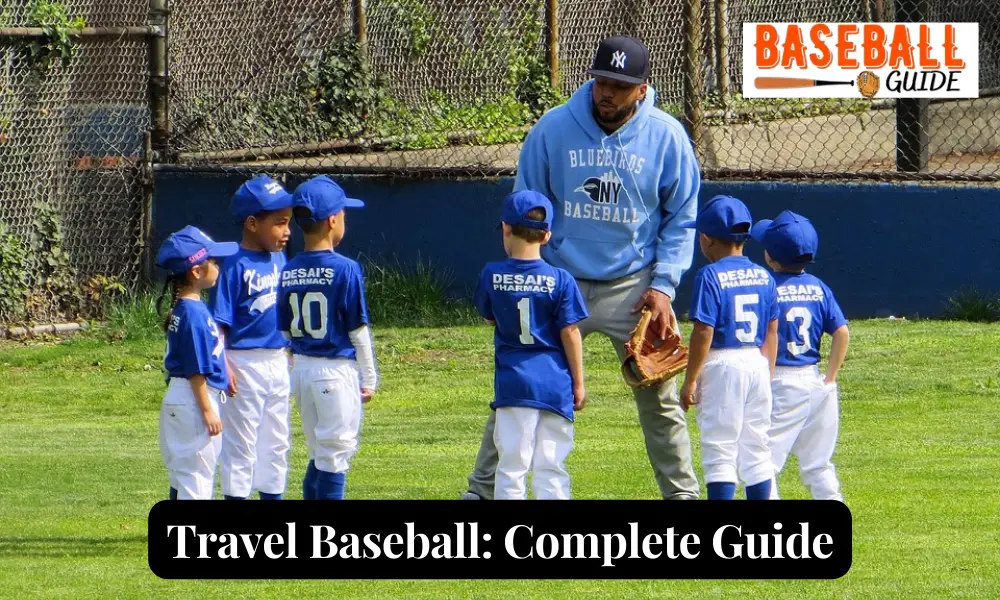
Do you want your child to be a great baseball player?
Are you a youngster who has finally realized that you want to take your baseball skills to the next level?
Or possibly both the parent and the kid are reading together, eager to learn more about improving their baseball skills and turning it into a more serious activity.
If you feel it to be a convenient strategy, participating in travel baseball may provide answers to all of your questions and allow you to accomplish all of your ambitions.
In this article, you will learn all you need to know about travel balls, from the fundamentals to the more advanced aspects.
What Is Travel Baseball?
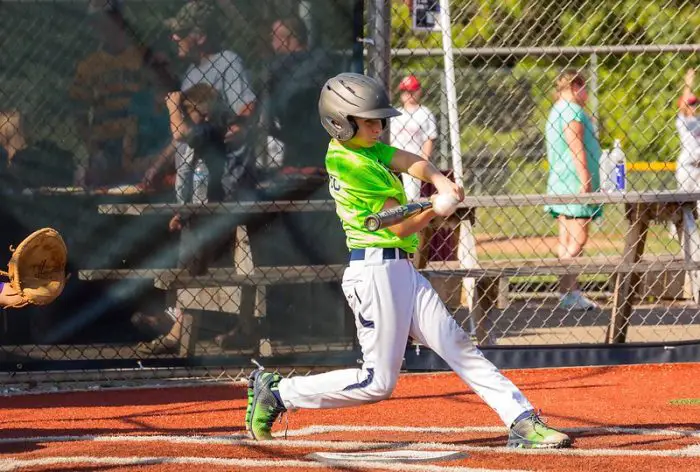
First and foremost, we must familiarize ourselves with the concept of “travel baseball.”
Typically, when people talk about travel baseball, they’re referring to a squad of elite players who participate in tournaments and train at their own facilities.
You may think of it as a sort of youth baseball in which games are played away from home.
Teams known as ‘ travel ball teams or travel teams ‘ in this form of baseball may travel to another state or city to compete in baseball travel tournaments.
Structure Of Competition
A tournament system is used for almost all travel baseball games, played on weekends.
Tournaments may potentially take place anywhere, although they are most often conducted in multi-field sites near major transportation hubs.
You can anticipate traveling more if you reside far away from such transit centers.
The final teams for the event are decided after each travel ball team has played several matches.
Depending on how well a team does, they may play somewhere between three to eight games throughout the course of a two-day or three-day tournament.
The number of tournaments a team may enter isn’t set; although two per month is considered normal, higher-level teams may play more regularly.
Level-Play In Travel Baseball
There are generally three categories of competition in a travel baseball tournament, ranging from the least developed to the most developed level of youth baseball.
This classification is according to Baseball Youth’s DivLevel classification system, which is a travel baseball’s national team division classification system.
1. Division 1 Or D1
Within Baseball Youth’s DivLevel categorization system, Division 1 or D1 is the top level of play.
D1 is better suited for teams considered Major/All-Levels of AAA, Gold, or Elite/Advanced in their respective leagues.
Teams in the D1 division should play the bulk of their games against regionally competitive opponents and/or nationally rated.
2. Division 2 Or D2
Within Baseball Youth’s DivLevel categorization system, Division 2 or D2 is the intermediate level of play.
Teams graded as Medium AA/High AA, Silver, or High-Level Intermediate are best suited to compete at the D1 level.
Teams in the D2 division should play the bulk of their games against other mid-level regional and local opponents in the same division.
3. Division 3 Or D3
Within Baseball Youth’s DivLevel categorization system, Division 3 or D3 is the weakest level of play.
Low AA/All-Levels of A, Bronze, or Low-Level Intermediate/Beginner teams are the greatest fit for the D1 level.
Teams in the D3 division should play the majority of their games against other domestic and regionally-based opponents in the same division.
Travel Baseball Against Little League
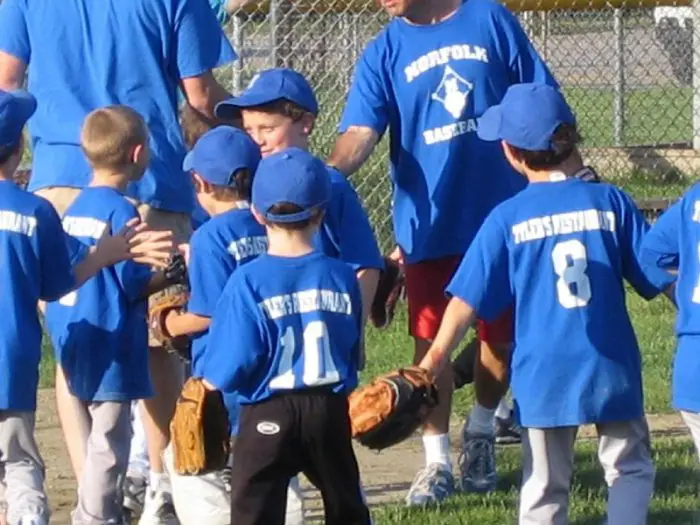
There are several significant parallels and distinctions between travel baseball and little league baseball .
Both aid in developing important life qualities such as a positive work ethic, sportsmanship, cooperation, and the ability to learn from mistakes.
They are, however, significantly different in terms of time investment and competition.
One is recognized for being competitive and raising your skill level, while the other is known for being recreational and a means for youth to learn the rules.
Travel baseball offers a higher competition level than what traditional little leagues provide.
In a single season, roughly 14-20 games are played in both.
There isn’t much difference between these two, other than the amount of seriousness and the fact that you’ll have to travel for a travel ball .
How To Get On A Travel Baseball Team?
As a player, being a member of a travel baseball team is a thrilling experience.
Following are a few pointers that can help you relax and perform at your best, making joining a baseball team much simpler.
1. Be On Time (Or Before Time)

First of all, plan to arrive a few minutes early. If you arrive late, you’ll have to hustle to keep up with everyone.
Arrive early enough to check in, go for a quick jog, play a game of light catch with a buddy, and ease up on your own.
2. If You Are A Baseball Player, Look Like One
Dress appropriately for tryouts; do not show up in jeans or oversized basketball shorts.
The ideal outfit consists of a clean pair of baseball trousers , a decent light sports shirt, and a nice hat worn with the bill facing front.
If you don’t have baseball pants available, a nice pair of sweatpants will do.
3. Practice Makes Perfect
You should play catch even if you only have time to do so twice or three times before the tryout.
If you’ve been to the tryouts previously and are familiar with a few of the activities they’ll be doing; it’s a good idea to put those skills into practice as much as possible.
Practice gaining leads , doing excellent leaps, and anything else you believe you’ll see during the tryout.
4. Play Your Usual
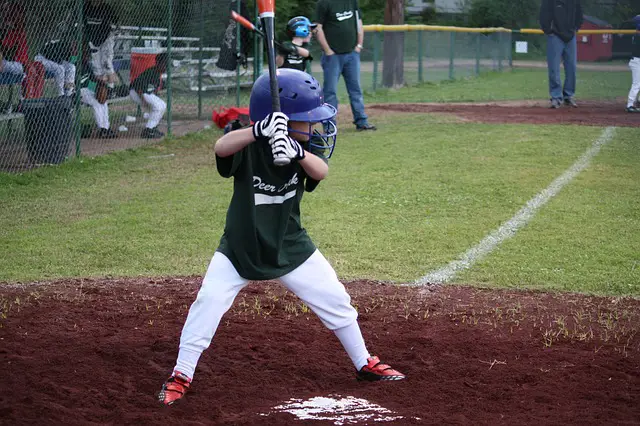
You should just play your game and allow the game to come to you; don’t try to force it.
Simply wait for the right chance to present yourself, and then boldly do your task to the best of your ability.
If you push too hard, you will almost certainly make more errors than you would otherwise.
5. Good Behavior
You’ll be a suitable candidate if you’re willing to work hard and take constructive feedback.
Have a sportsman’s attitude ; if you don’t catch the ball, ask the coach to throw it again instead of pouting.
Don’t be hesitant and hide in places, missing out on the chance to learn what you need to know in travel teams.
Also, remember to be kind to your teammates , motivating them when they make errors and communicating with them regularly while conducting the exercises.
Advantages And Disadvantages Of Travel Baseball
There are upsides and downsides to consider when it comes to travel baseball.
- Strong Competition: Travel baseball lets kids play with and against some of the finest players in their region and even beyond.
The players are more committed to the game and motivated to progress. Your child’s performance will be pushed to the limit by the increased level of competition.
- Improved Coaching: Coaches are frequently ex-players who have gone on to coaching careers in the sport.
There is a higher likelihood that a travel baseball coach will be better educated, more experienced, and more tied to the game.
- Fun Experience: Many weekends will be spent in hotels together, learning about new places and bonding as a group in a travel baseball team.
It’s one of the best ways for young people to go to new places around their region and the country, and they can do it while having an amazing time with their teammates.
- Easy Exposure: You can get a lot of attention from college and professional scouts by playing travel baseball.
One of the best things about being on a high-level travel baseball team is meeting other high-level coaches.
- Character Growth: The significance of travel teams about being on time, behaving well, and putting in the most effort makes a child more disciplined.
As young people move from Minor League Baseball (MiLB) to Major League Baseball ( MLB ), they already have the sense of urgency that they need.
Disadvantages
- Very Competitive: Travel teams take their games seriously and strive to win games.
A travel team must balance the development of its players while still attempting to win matches. This often results in players who aren’t the greatest not having a chance to play.
- Costly: Travel baseball is costly and sometimes extremely costly, which might be a reason for most kids to drop its idea.
- Prioritized Task: Even a reasonably competitive travel squad may consume a summer’s worth of weekends.
As a result, it is a time-consuming task that you must be able to prioritize.
Frequently Asked Questions About Travel Baseball
Some common questions about travel baseball are:

1. How Do Baseball Players Travel?
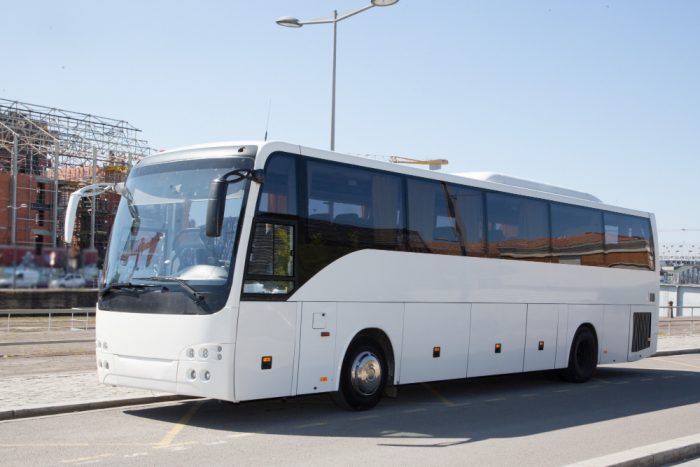
Teams may travel by bus if the shortest path between the two cities is less than 200 miles.
Anything longer than that necessitates plane travel , with all flights being nonstop.
Major airlines, which are generally among the team’s sponsors, charter flights for most MLB clubs.
2. When Does Travel Baseball Season Start?
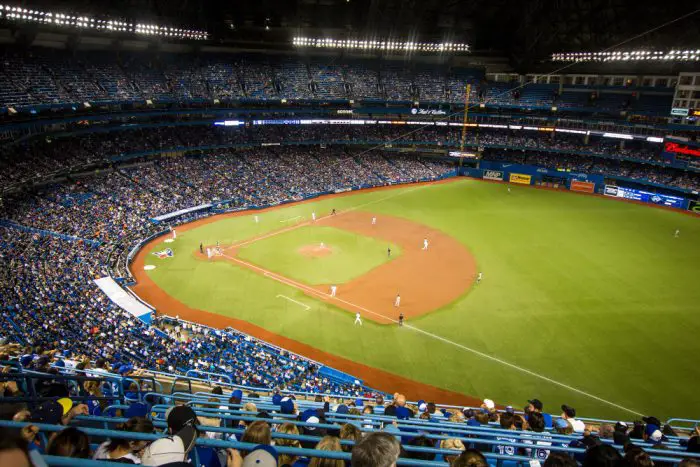
The travel season is divided into two seasons: Yearly Season (Main) and Fall Season (Optional)
The yearly season starts from around April 1, ends in August , and is compulsory.
While the fall season spans from around September to the late part of October, which is optional.
3. Who Can Play Travel Baseball?
The 8-year-old squad, mostly composed of 2nd and 3rd students, is the first to go.
4. What Age Is Best For Transitioning To Travel Baseball?
Travel baseball would be a logical next step for children aged 11 to 12 (but not younger than that) who want to enhance their talents to the level of a professional player.
5. Is Travel Baseball Worth The Money

Whether Travel Baseball is worth the money or not depends on how serious you are about getting your skills to higher levels.
It gives extra opportunities for committed baseball players who want to get the most out of each year
6. How Much Does Travel Baseball Cost?
The exact cost of participating in travel baseball differs, but it typically costs somewhere around $500 and $2,500 per year.
Travel baseball is an effective way to enhance your skills and increase your chances of playing in college or as a professional.
But, do not overlook the expense and investment of time that comes along with the benefits travel ball gives.
Only the most costly team doesn’t need to make your kid adequately talented to join a team in college or select baseball as a profession, a fairly priced team may be similarly trained and qualified, so you need to get into a team thoughtfully.
After reading this article, I hope that you have a firm grasp of all of the technicalities surrounding travel baseball .
About The Baseball Guide
Follow Us on Social Media
Thebaseballguide.com is a participant in the Amazon Services LLC Associates Program, an affiliate advertising program designed to provide a means for sites to earn advertising fees by advertising and linking to Amazon.com. As an Amazon Associate, I earn from qualifying purchases.
Copyright © 2017 - 2023 Thebaseballguide.com - All Rights Reserved.

Travel Baseball Uncovered: A Guide For Parents And Players
Let’s talk about baseball—travel baseball, to be exact.
For many, moving from the Little League to travel baseball feels like catching a curveball. After all, it’s more than just a pace change; it’s about trading Saturday afternoon matches on a grassy field for serious club competitions that come with a higher price tag.
You might be thinking, “Is this the right play for my little slugger?” or “How do I even go about choosing a team?”
Well, here’s our chance at bat. We’ll walk you through everything youth travel baseball has to offer, including answering these questions and more.
Table of Contents
What is Travel Baseball [Explained]
Travel baseball is just what it sounds like. It’s when youth teams have to travel in order to have their games and tournaments. This is usually the next step after traditional recreational or Little League.
Since the level of competition is much higher, it can help them develop their skills.
But preparation comes at a cost—literally. And all that time on the road can take up your schedule very quickly. But despite all that extra work, they’ll get an exciting adventure out of it. Now, they’ll face off against teams from different cities, states, and sometimes even countries.
The love for Travel Baseball is Growing Fast.
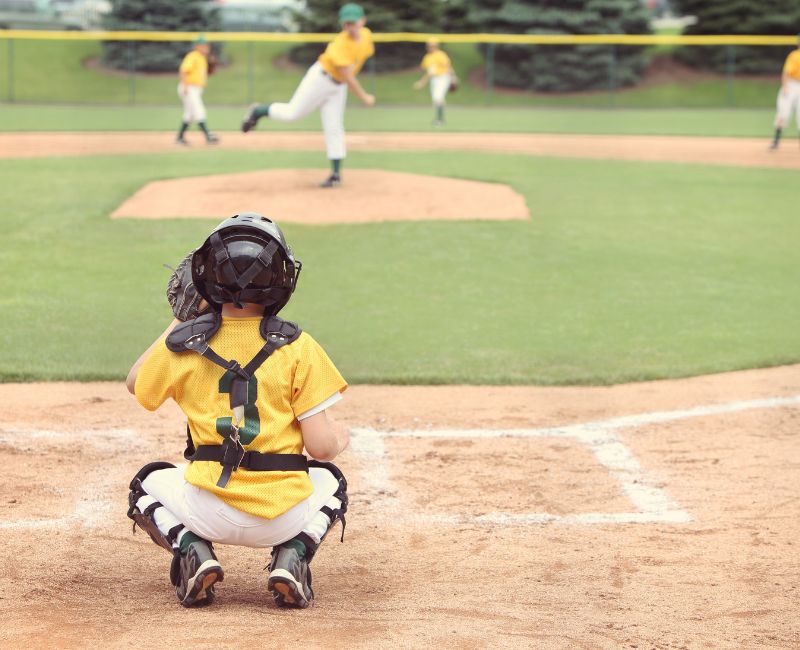
In recent years, travel baseball gained an exponential amount of popularity and saw thousands of teams pop up across the country.
Before the 90s, it was a relatively niche experience only limited to players nestled in regions like Texas and California.
Nowadays, participation is considered necessary for young players wanting to sharpen their skills and go up against some really tough competition.
Instead of focusing on the local leagues like recreational youth baseball does, travel ball operates under various organizations, hosting hundreds of tournaments each year.
Some big names include USSSA (United States Specialty Sports Association), AAU (Amateur Athletic Union), Triple Crown Sports , and Perfect Game .
The ambitious goal for any team is to face off against as many different teams as possible to gain experience and test their skills.
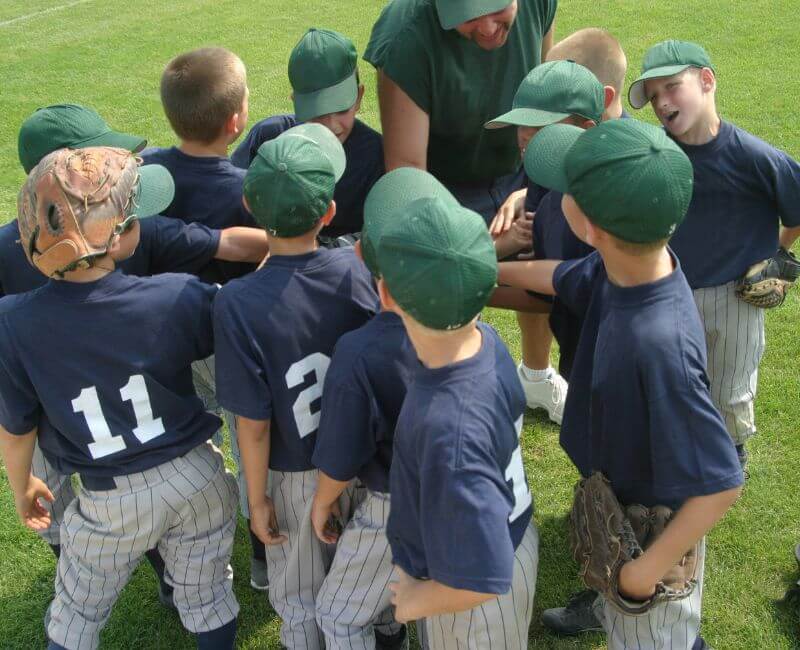
Everyone can create a travel baseball team. It doesn’t matter if you’re a parent, high school teacher, or someone who coaches college kids.
The highlight of the season is the travel baseball tournament. Bringing together talented teams from different parts of the world to compete.
This lets players show their skills to a bigger audience, including scouts and college coaches. These tournaments are organized by many institutions and happen locally, regionally, or even nationally.
There’s nothing cooler than the USSSA World Series, though. Every year, it’s hosted by the United States Specialty Sports Association.
You’ll find talent from all over America coming here to fight for that top spot. But another epic tournament is the Triple Crown Summer Nationals, where they hold it at Myrtle Beach
in South Carolina. It attracts teams from everywhere and is known for great competition and vacation vibes.
A unique little competition is held in Cooperstown, New York, known as the Cooperstown Dreams Park Tournament.
Cooperstown, known as baseball’s birthplace, offers a unique week-long stay in baseball-style barracks. You can visit the National Baseball Hall of Fame.
These intense and challenging tournaments bring out some of the most talented players young kids have to offer. It’s also a great way to boost your young player’s confidence in playing on those big stages!
Different Levels Of Travel Teams And Their Requirements
It’s not just one level fit all for travel baseball teams. They’re organized into various levels based on skill, experience, and commitment from players.
Imagine putting someone who only knows how to throw with moderate force into a contest against someone who does it with full force.
The team you choose for yourself should align with your skill level, how much free time you have, and your developmental needs as a player. Here’s an overview of different levels:
1. Local Travel Teams : For beginners starting their journey through travel baseball. The games they play are mostly local or within a close driving distance. Practices only happen a few times a week, and games during the weekend.
2. Regional Travel Teams : For players with more experience and higher skill levels. They go on trips for games and tournaments that will require overnight stays at places. Commitment level is higher, with practices being more frequent along with a longer season.
3. Showcase Travel Teams : The big leagues of young kid baseball players. These teams are made up of highly skilled people who are very serious about baseball. They have college scouts and recruiters present their games. This includes going to different states for showcase tournaments.
You’ll need to be extremely committed to even think about trying out for this team, and their practices are rigorous and frequent, lasting all year round!
Benefits of Playing in a Travel Baseball Team
A lot of benefits come from playing travel baseball.
The biggest one? It can help players get to their goals. It’s not just about playing a game, especially when you want to make it big. It’s actually an experience that provides lifelong skills that can be applied everywhere else.
Competition in recreational leagues is nothing compared to this. It’s way higher. This allows players to grow new and old skills at a faster rate.
There’s also an intense training schedule that demands discipline, resilience, and focus. These qualities go beyond just sports.
Participating in high-profile tournaments also gets the attention of other coaches and scouts. Which makes it easier for them to open doors for scholarships and professional contracts.
Traveling away from home just for games might seem like a drag, but it builds responsibility and maturity. It is a demanding journey for sure, but very rewarding.

Did MLB Players Play Travel Baseball?
Definitely! A lot of Major League Baseball (MLB) players used travel baseball as their starting point, too. It gives them all the exposure they need, honing skills at such a young age along with fierce competition.
Take Bryce Harper , for example. He’s one of the biggest names in MLB today. His journey started back when he was a child playing for the Southern Nevada Bulldogs 14U travel team. The opportunity came up where he could go against older players who were more experienced than him. This experience helped shape his professional career.
Albert Pujols also played travel baseball when he was younger on his team called Fort Osage Indians Travel Team before sailing into the Hall of Fame.
Clayton Kershaw ? Yeah, him too! Another name you hear often in MLB didn’t start there either — he played for the Dallas Tigers Travel Team where he developed early on gaining crucial skills and discipline that are instrumental in his success today.
How to Find a Travel Baseball Team in Your Region?
If you’re a young baseball player who wants to take their skills to the next level, then joining a travel team is a great opportunity. If you are a parent and want to make your child the next MLB star, then travel baseball teams are a great place to start with.
These teams play across the country and allow players to show their talents against top-tier competition. But how do you find one of these teams?
Here’s a guide on how you can join a travel baseball team in the USA.
Check your local youth baseball organization.
Your first step should be checking with your local youth baseball organization. Chances are they have travel teams that play in leagues and tournaments outside of the regular season. If they don’t, then it’s likely they know someone who does.
Drop by showcases and camps.
In-person events like showcases and camps are great places to meet coaches and scouts from travel baseball teams. They’re designed specifically so players can showcase their skills and get noticed by recruiters.
The internet holds many answers, including finding a travel baseball team. Websites like USSSA Baseball, Perfect Game USA, and Travel Ball Select list lots of travel baseball teams based on state, age group, and skill level — all at a click away.
Talk to other parents and players.
If you want first-hand experience, then talk to other parents or players who have been through this process before. They can give useful insight into which teams are reputable, well-run, and competitive.
For example, if you live in Texas, then one option could be the Texas Bombers Baseball Club — an organization that has multiple teams at different age levels and is known for developing young talent. You can learn more about them by visiting their website or attending one of their tryouts.
How to Find the Perfect Travel Baseball Team?
Identify the skill level and commitment of the player.
First thing first, you need to figure out how committed your child is to the sport and their skill level. If he is naturally gifted athlete then you should help him to follow his dream.
Research Local and Regional Teams
Begin by looking at teams that are close by. These teams usually have varying levels of skill and serve as great entry points for most players.
You can check their websites and social media pages to learn more about them such as philosophy, coaches, players, and game schedule.
Attend Local Games and Practices
Sitting in on local games and practices allows you to get a firsthand look at how they run things. You’ll be able to see their coaching style, how they interact with the players, and the overall team dynamic. With this insight, it’ll be easier to make a decision.
Speak with Coaches and Parents
While observing is good, it isn’t enough. Take some time out of your day or week to speak with coaches.
This allows you to gain an understanding of their training methods, the expectations they have for your child, and the goals they want them to reach. It’s also good practice to talk to other parents so you can get a general idea of what people think about the team.
Consider Logistics
Logistical factors are important, too, so don’t forget about them. Make sure that the team’s practice location is suitable for you and your family’s schedule since it may be far away from where you currently live or work.
The game schedule should be looked at as well because there could be conflicts in dates that would keep you from attending games.
Tryouts & Evaluations
Most teams hold tryouts or evaluations for people who are interested in joining. If this is offered, take advantage of it because it gives your child the chance to showcase their skills and for you to see if the team would be a good fit.
A player’s evaluation is also helpful because it gives you insight into how strong the team itself is.
Travel Baseball Season Preparations
Preparations before the pre-season.
Before the baseball season starts, you’ll want to make sure that your child is mentally and physically ready for the long days ahead.
So, let’s start with an off-season workout routine to help build strength and agility. But don’t forget about eating well and getting enough sleep. Plus, practicing regularly can take their fielding, pitching, and hitting skills way up.
During the season
Once the season starts, it’s important to stay fit and perform at your best. You’ll want to communicate with their coach to keep track of your child’s progress as well as any areas they need improvement in.
Another thing you should do is show up to their games and practices. It helps you stay in tune with how the team is performing and also supports your child. And finally, always keep their lines of communication open, whether it’s about pressure or their anxiety.
Post-Season
After a long season, it’s important to take a break. Reflect on the games you had together. Acknowledge all the good things they did but also focus on areas they can improve in.
Give them some downtime so they can rest and recover. Even though they’re chilling around, don’t let them become bums — physical activity is still important for them during this time.
Travel Baseball vs. Little League
Both types of baseball have their own unique experience and benefits that come along with it. The choice of which one to put your kid into mostly depends on what they want out of it.
For example, travel baseball is more competitive. It attracts players who are committed to sports no matter what and are willing to travel around just for a game against top talent in various regions. Not only does this provide intense competition but also high-level coaching.

It does require a lot of time, as seasons are much longer than in little leagues with more games and practices.
If you want your child exposed more, then this would be a good option, as you can see from Bryce Harper, Albert Pujols, and Clayton Kershaw.
Now, little league baseball is less demanding. It’s generally more focused on the community and not so much on traveling and time.
It’s actually a great option for kids who still love the sport but aren’t ready to commit to such a demanding schedule. They focus on learning fundamental skills, enjoying the game, and fostering a sense of community.
You can learn more here: Travel Baseball Vs Little League
The Cost of Playing Travel Baseball
If your kid has a future in baseball, you might want to consider enrolling them in travel baseball. The only problem is that this option is much more expensive than local leagues.
Local leagues tend to have low costs because they don’t do as much traveling as travel teams have to do. On top of paying for the actual games themselves, there’s also the top-of-the-line coaching and amazing facilities that the team needs to cover.
You’ll be hit with fees like equipment, uniform, tournament, travel (like gas and airfare), and a team fee.
The team fee alone can include things like league fees, practice facility rentals, and salaries for the coaches.
And let’s not forget about any extra training or lessons they need in order to take their skills up a notch.
It’s always good to ask the people organizing the league what you’re paying for specifically because then maybe it won’t seem so bad (it probably will still seem bad, though).
But it really does come down to where you live.
Depending on that, it could cost you anywhere from $1,500-$3,000 per season. And if you’re on one of those elite teams competing at national tournaments, then I’m sorry, but it’ll probably cost way more.
Find Out How To Choose A Coach
A good coach doesn’t just teach how to play sports but also builds discipline and confidence, along with fostering a love for the game. Here are some tips on picking a coach:
Experience And Certification : A coach should always have some kind of experience coaching youth sports, but having proof that they passed some coaching program can give you peace of mind, knowing they know what they’re doing.
Coaching Style : Every coach is different and will treat their athletes differently, too. Some will be very intense in trying to push their players, while others are more relaxed yet inspiring. Pick what works best with your child’s personality.
Communication Skills : A good coach knows how to explain things in a way that’s easy for their athletes to understand. They should also be great at talking to you and other parents.
Focus On Development : It’s better for your kid to improve their skills rather than just win all the time. Look for coaches that will work with them on that.
Reputation : Finally, look into what other people say about the coach. Not only other players but parents, too. It doesn’t hurt to ask around or even watch them during practice if you can.
Things to Know About Uniforms and Equipment in Travel Baseball
Uniforms and equipment are a necessary investment in travel baseball. It can be beyond what you expect from Little League. Here’s a quick rundown of what your child might need:
Uniforms : Most travel baseball teams have their own custom jerseys that come with pants, caps, belts, and socks. Some teams may even have home and away uniforms, so check with the manager first.
Gloves/Mitts : Get your child a good quality glove or mitt that suits the position they play. For example, catchers and first basemen have their own special mitts, while outfielders use bigger gloves compared to infielders. Check out the Best Youth Infield Gloves
Bats : Bat rules can get very specific, depending on the league. Before you buy one, make sure you understand what kind is allowed. Also, consider their height, weight, and hitting strength when selecting the right bat size .
You can check out my list of Best Youth Baseball Bats
Helmets : No matter how old or young your child is, they need a batting helmet. Some leagues even require faceguards as well. Check out the Best Youth Baseball Helmet
Cleats : Running on grass and dirt requires traction, which is why cleats are used in baseball. However, be aware that some leagues don’t allow metal spikes, so again, you should always check if there are any shoe restrictions.
Protective gear : Depending on the position they’re playing at, your kid may need extra protection such as shin guards for their legs or a chest protector for their torso
What is a good age range for travel baseball?
Travel baseball typically starts around 7 or 8 years old and goes through high school. However, the age that you can join may differ depending on the league or team.
How much does it cost to play travel baseball?
The price of playing travel baseball could be greatly different depending on things like where you live, what team you’re on, and at what level you play. You’ll have to pay for league fees, uniforms, equipment, and even the costs of traveling and staying in other cities for away games.
How often would we need to practice?
Usually, travel teams practice more often than recreational ones. It’s common for them to meet several times each week. But it will depend on the time and dedication your child’s coach expects.
How far do they have to go?
Again, that’ll depend on what league your child signs up for. Some teams only need to go a couple of miles, while others will have to cross city lines.
Can my child also play another sport?
It all depends on how much time both sports require. Understandably, travel baseball takes up quite a bit of time and energy, so consider if they have enough for both.
Overall Worth of Travel Baseball
Traveling with a baseball team is no joke. For players and families alike, it’s considered a big commitment that takes up lots of time, money, and energy.
And while it opens up new opportunities, the best reward for joining one is amazing! The skills learned, and knowledge gained from playing at higher levels is priceless.
Plus, it builds character, helping to teach important lessons like teamwork, dedication, success handling, and, most importantly, failure handling. And let’s not forget about the friendships built along the way from spending hours with teammates in different places across the country.
Even though some costs and sacrifices come with this commitment, most families say joining a traveling baseball team was totally worth every bit of it.
Just remember, the end goal is to love the sport and grow as a person.

Hello everyone. My name is Jason Butler, and I live in California, America. I was a professional AAA Minor League Baseball player. I lost my chance of playing MLB for injury issues, but I did not lose my love for baseball. I attended the coaching training program and am now working as a coach in a small school in San Diego.
I always love to share my experience and knowledge if that can help you. Play baseball, and stay fit.

AA vs. AAA Baseball: What’s the Difference?
We are reader supported. When you purchase through links on our site, we may earn an affiliate commission. Also, as an Amazon affiliate, we earn from qualifying purchases.
Major League Baseball is one of the most unique league’s in professional sports because – thanks to its Minor League system – it provides more opportunities for professional players to achieve their dream of playing at the highest level.
There are five levels of baseball in the minor leagues: Rookie Ball, Low A, High A, AA, and AAA. The AA and AAA levels often receive the most attention from the average baseball fan.
The biggest difference between AA and AAA baseball is that AAA is the highest level of the minor leagues and AA is the second highest.
There are several other subtle differences between the two levels that must be discussed in order to fully grasp the landscape of minor league baseball.
Is AA Baseball Really More Competitive Than AAA Baseball?
Technically, AAA baseball is the highest level of competition in the minor leagues, but some people argue that there is often more talent at the AA level.
Many people in professional baseball believe there is more talent at the AA level because that is where many of the top young prospects spend most of their time when in the minor leagues.
It has often been said that the biggest jump for a minor leaguer is from High A to AA because many of the league’s best young prospects play at the AA level. It is typically used as a measuring stick for those young prospects who dominate the lower levels of the minors.
Teams let some of their best prospects hangout on the AA team for longer than some of the other levels.
Once a prospect proves his worth over time at the AA level, he normally gets a short stint in AAA to make sure that his success at AA wasn’t a fluke before being called up to the big leagues.
Sometimes, some of the best prospects skip the AAA level altogether. It is not uncommon for teams to call up players straight from AA. In the past this was not the norm, but it happened enough that it did not surprise anyone when coveted prospects skip the last level of the minors.
However, in today’s game, it is becoming much more common. There were 61 players in 2020 that made a debut in the Major Leagues with no AAA experience.
The pandemic may have had something to do with that as there was no minor league season in 2020 and an expanded 60-man roster, so teams wanted to get their best prospects on the field. This trend is worth keeping an eye on to see whether or not it becomes the norm.
Again, this luxury is saved only for the best of the best in the minor leagues. Guys like Kyle Schwarber, Miguel Sano, Byron Buxton, and Michael Conforto are the types of prospects who make the jump from AA to AAA.
What is the Level of Competition in AAA Baseball?
Many teams view their AAA team as an extension of their Major League team. According to Fangraphs , the average age among players in AAA in 2012 was 28.2. The average age among AA players that year was 23.8.
Many of the players on a AAA team have either spent some time in the Major Leagues and have not performed well enough to stay there or have played several years in AAA without ever making it to the big leagues.
This does not mean that there are not some Major League level prospects in AAA. It just means that those prospects are usually much older and are often overlooked by some of the younger guys in the lower levels of the minor leagues.
It is advantageous for Major League teams to keep experienced players at the AAA level. When the big league team has a spot to fill for a couple weeks due to injury, many organizations prefer to bring up an experienced AAA guy than one of their young prospects in AA.
When this happens, the expectation is that the player will come in, provide some depth for a few weeks, and return to AAA when he is no longer needed. When teams call up their top prospects from AA, they are often looking for them to stay at the big league so long as they can handle it.
All in all, AAA baseball is still a high quality professional baseball league with talented players right on the verge of breaking through to the big leagues.
What is the League Structure of AA and AAA?

Recently, Minor League Baseball went through a restructuring that shook things up a bit with the end goal being increased salaries, less travel, and better working conditions for players.
Thanks to this restructuring, the AA and AAA levels are structured a little bit differently.
The AAA level consists of two conferences: AAA East and AAA West. Within these two conferences, there are divisions. AAA East consists of three divisions (Midwest, Northeast, and Southeast) where AAA West consists of two divisions (East and West).
The AA level consists of three conferences: AA Central, AA Northeast, and AA South. Within each of these three conferences there are two divisions.
In the AA Central and AA South conferences, there are the North and South divisions. The AA Northeast conference consists of the Northeast and Southeast divisions.
While it may be confusing to have all of these conferences and divisions named for their geographical location, one of the reasons for the restructuring of the minor leagues was to decrease the amount of travel among teams, especially at the AAA level.
Before this restructuring, it was nothing for teams to travel from one coast to another week in and week out because the divisions were not geographically aligned. This change happened in an attempt to improve the living conditions of minor leaguers.
While many argue that conditions must still be improved, this is a step in the right direction.
Rule Changes
One of the most controversial topics among baseball fans today is some of the rule changes that are being talked about in the MLB.
For some of these potential rule changes, the minor leagues are being used as guinea pigs to test them out before applying them to the big leagues.
For example, in AAA this past season, all teams were required to use bases that were slightly bigger than regulation and covered in a less-slippery surface. This is not one of the most hotly-debated changes as bigger bases do not change how the game is played.
However, in AA, a more controversial rule change was tested. In 2021, all infielders were required to be in the infield dirt when the pitch was thrown. This rule attempts to eliminate the shift where an infielder moves into shallow right field to become a fourth outfielder.
In the lower levels, rule changes such as pitch clocks, limits on pickoff attempts, requirements for pitchers to step off the rubber before they pickoff, and even automated ball and strike systems were implemented.
Time will tell whether or not these new rules make their way to the big leagues.

Related Questions
Does every major league team have a aa and aaa minor league team.
Yes, every organization in Minor League baseball has one AA and AAA team in the minors. Each team also has a High A, Low A, and Rookie Ball affiliate. In the past, some organizations had more teams than others at the Rookie Ball level, but that has since changed with the restructuring.
Are players required to play in the minor leagues before playing in the MLB?
No, players do not have to play in the minor leagues before making their way to the big leagues although it appears that way because so many of them do. It happened quite a bit in the 50s and 60s, but is very rare today. The most recent player to skip the minor leagues altogether is Chicago White Sox pitcher Garrett Crochet, a relief pitcher from the University of Tennessee who got drafted and went straight to the majors in 2020.
Are Minor League teams owned by their Major League affiliates?
Most Minor League teams are privately owned but share affiliation contracts with their Major League teams.
How much do AA and AAA players get paid?
The minimum salary for a AA player is $600 per week, and the minimum salary for a AAA player is $700 per week. These numbers were increased from $350 and $500 thanks to the MiLB’s new Player Development Contract with Major League Baseball. These are minimum numbers, and players who are more experienced sometimes make more money.
Can Minor League players be on the 40-man roster?
Yes, the 40-man roster is made up of both Major and Minor League players. These 40 players are allowed to be called up to the 25-man roster at any given time. Those 25 players are on the Major League team while the other 15 are dispersed among the minors (usually at AAA and sometimes AA).
See Also : Why do Minor League Teams Switch Affiliations? Does Minor League Baseball Have a World Series? What Months are Baseball Season? Why is Tropicana Having So Many Complaints?
https://tht.fangraphs.com/the-double-a-jump-2/
DivLevel – Travel Baseball’s National Team Classification System
- June 6, 2018
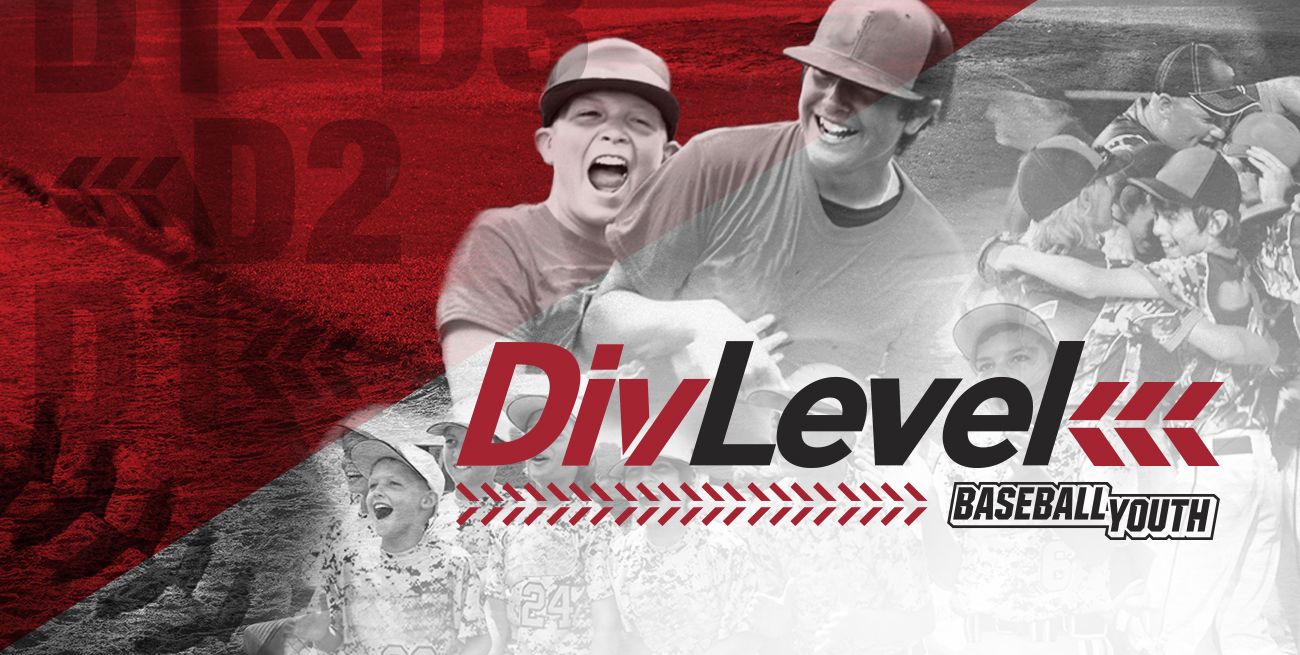
In the interest of supporting a level playing field, Baseball Youth has established the DivLevel team self-classification system for travel teams throughout the country. Comprised of three clearly defined divisions, DivLevel is designed to clarify the often-confusing terminology associated with classifying travel teams. In addition, DivLevel will serve as the basis for Baseball Youth’s team ranking system, where teams from all levels of play will be ranked against others throughout the country.
Why should you use DivLevel? By classifying your team with DivLevel , you are joining the movement to simplify the tournament process, increase opportunities for equal and adequate competition during tournament play, and bring the focus back to the game. Together, we will unify the industry and enhance the overall experience for our players, coaches, and families.
“The team at Baseball Youth believes it is time to take a proactive step in unifying the classification process, which will drastically benefit both travel baseball teams and tourney providers,” said Matt Roberts, President of Baseball Youth. “The DivLevel team classification system is built around the idea of promoting one set of universal division classifications: D1-D2-D3. These three division classifications are extremely easy to explain to parents and players and for coaches to understand as well!”
DivLevel is free to use and easy to navigate. It only takes 1-2 minutes to classify your team for the entire season. If at any point in the season you feel that your team needs to move up or down a level, simply log in and change your classification!
Through your team’s DivLevel classification, you will have the chance to be featured in Baseball Youth Magazine and on Baseball Youth social media channels! In addition to these national exposure opportunities, your team will automatically be in the system for future Baseball Youth team rankings.
What DivLevel classification is your team? DivLevel allows coaches to choose the most appropriate level for their particular teams based on candid assessments of their teams’ skill levels. DivLevel is made up of 3 very easy-to-understand division levels: Division 1 (D1), Division 2 (D2) or Division 3 (D3) as follows:
- D1 – Major/All-Levels of AAA, Gold, Elite/Advanced, Competitive Nationally and Super-Competitive Regionally
- D2 – Medium AA/High AA, Silver, High-Level Intermediate, Competitive Regionally and Super-Competitive Locally
- D3 – Low AA/All-Levels of A, Bronze, Low-Level Intermediate/Beginner, Competitive Locally
To learn more and classify your team visit DivLevel.com.

Athletx Sports Group and MaxU Join Forces to Redefine Mental Performance for Young Athletes
[Tampa, FL, October 2023] – Athletx Sports Group, a leading name in sports event management

The Savannah Bananas and Athletx Sports Group Announce Exciting Partnership and Launch of Youth Banana Ball Tournament
Louisville, KY., February 15, 2024 — Athletx Sports Group, a leading youth baseball and softball
- [email protected]
- 800-559-ATHX (2849)

Travel Baseball: The Ultimate Guide for Parents and Players
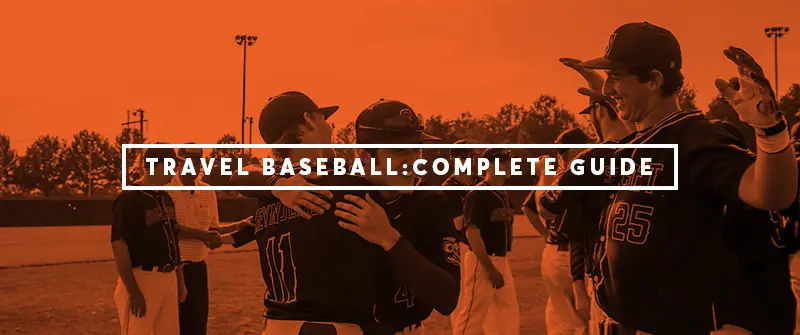
Table of Contents
What is travel baseball, what to look for in a travel baseball team, travel baseball vs. little league, travel baseball pros and cons , criticisms and controversy, is travel baseball worth it.
For many families, the transition from Little League to travel baseball comes with stress, anxiety and questions about what to look for in a team and what to expect from the experience — not to mention the question of whether making the switch from a more laid-back rec ball program to a more competitive (and expensive) travel club is the right decision in the first place.
In this post, we’re going to go over everything you need to know about getting started with youth travel baseball. We’ll help you answer the questions above and determine whether travel baseball is a good fit for your son or daughter.
If you have a softball player in the family, you may also want to check out our article “ What to Look For in a Travel Softball Team ,” which covers some of the same information from a softball perspective and dives deep into my personal experience as an elite-level amateur player and college recruiting prospect.
Table of Contents :
- How to Choose a Travel Baseball Team
- Travel Baseball Pros and Cons
- Is Travel Baseball Worth It?
First, it’s important to understand what a travel baseball team is and how travel baseball is organized.
There are tens of thousands of travel baseball teams around the country, and their popularity has exploded over the past two decades. As recently as the 1990s, travel baseball was a niche experience limited mostly to elite players in baseball-rich areas like Texas and California. Today, participation is seen by many as a near necessity for talented players to develop their skills and hone their game against the best competition they can find.
Whereas Little League is the dominant organization when it comes to recreational youth baseball, there are multiple organizations throughout the country that host hundreds of travel tournaments each year. Some of the biggest and most popular are USSSA (United States Speciality Sports Association), AAU (Amateur Athletic Union), Triple Crown Sports , and Perfect Game . Travel baseball teams often participate in tournaments organized by more than one of those organizations.
A team can be started by anyone. Many are formed by parents, but many others are formed by high school and former college coaches. Depending on their organizational goals, some programs have just one team that participates in one age bracket (such as 10 and under), while some are run like businesses and have teams that compete in every age group.
Some huge organizations, such as California Baseball Academy (CBA), even have multiple teams within the same age group, located in multiple cities. CBA has teams not only in California, but also in Nevada, Texas, Utah and the southeast. High-level programs like that are often known for attracting top talent, for training recruits into elite players, and for feeding those players into nearby colleges and universities.
Travel Baseball Competition Structure
Virtually all travel baseball games are played on weekends in a tournament format. Those tournaments can theoretically be held anywhere, but are frequently held at multi-field facilities in easily-accessible travel hubs. For example, many Florida tournaments are held in Orlando because it’s in the relative center of the state, it has plenty of hotel rooms, and it’s home to many great baseball facilities. The farther you live away from such a hub, the more you should expect to travel.
Most tournaments begin with pool play, meaning that teams are guaranteed a number of games before heading into single elimination. A team can expect to play anywhere from three to eight games over the course of a two-day or three-day tournament, depending on how they perform.
There is no set number of tournaments a team must participate in. Each team decides which tournaments to enter on a case-by-case basis, taking into consideration factors such as age level, skill level, and cost. In general, two tournaments per month can be seen as about average, although higher-level teams may play more frequently.
Most organizations run regional and national championships, which are invite-only. For example, USSSA hosts “qualifier” tournaments, where the winner of the championship game (and sometimes the runner up) can earn a bid to the USSSA national tournament.
Additionally, beginning at age 14, some teams start participating in “college exposure tournaments,” where college scouts come from across the country to watch and evaluate prospects. These tournaments are typically more expensive than regular tournaments, and are often farther away.
How to Join a Travel Baseball Team
If you’ve decided to join a travel baseball team and aren’t sure where to find one, there are a number of resources available.
It may go without saying, but word-of-mouth can be a valuable first reference point. If you’re thinking about switching to travel baseball, chances are that you already know someone in your area who has made the jump. If so, don’t be afraid to ask them questions about the team and their experience. It’s a big commitment — both in terms of time and finances — so it’s important to make sure you find the right club for your son or daughter.
In addition to word of mouth, many organizations offer a list of active teams on their website. For example, USSSA has a tool that lets you filter teams by age level, skill level, and location . There are also many state-based forums and Facebook groups where coaches post their team’s tryouts (and positions needed). As an example, here are Facebook groups for travel baseball teams in Florida and Michigan — you can find similar groups for every state.
Another good option is FieldLevel.com , which (like the USSSA site) allows you to filter teams by state and level. While not every team is listed on that website, it does include over 4,000 clubs.
Here are eight things to think about when evaluating teams. These factors will make a big difference when it comes to your overall experience, so take the time to think about them, and don’t be afraid to ask questions of parents and coaches.
1. Coaching
A coaching staff can make or break a team. How coaches manage players, keep the game fun, instill the fundamentals, and focus on development — not only as athletes, but as young men and women — is extremely important.
Some travel baseball teams have parents or grandparents serving as the head coach. While that can be fine, it’s important to make sure those coaches don’t make keeping their own child on the field a priority. Before committing to a team, spend some time researching it by watching a practice and talking to current and/or former players and parents.
What’s the coaching style? Do they have high expectations but still encourage and love their players? Or, on the other hand, are they screaming at players when they make a mistake?
Additionally, are players treated equitably, or do some get preferential treatment based on their relationship to the coach or their financial contribution to the team?
Ideally, your child will be a part of that team and organization for consecutive years, rather than bouncing from team to team. As such, determining whether the coaching staff is a good fit is a crucial first step.
2. Cost
For many parents, this is the most terrifying aspect of travel baseball.
Just how much of a toll is this going to take on your bank account? The specific answer varies, but the typical range of cost for participating in travel baseball is between $500 and $2,500 per year.
That said, you can end up spending a lot more than that. Back in 2011, CBS News reported that one Georgia family paid $4,000 per year for their 9-year-old son’s travel team. You can imagine that older players in elite programs that travel all over the country can spend even more over the course of a season.
Typically, the more intensely focused a program is on developing its players for college baseball, the more money the program is going to cost. On the other hand, teams that are playing more for the fun of it — those looking for just a little more structure and competition than offered by Little League — won’t put as much of a dent in your wallet.
There are a number of specific factors that go into how much it costs to be on a team:
- Where you live . If you live in a baseball hub, like Texas or California, you won’t have to travel as far to get to tournaments. Many teams from rural areas regularly drive across multiple states (or sometimes even fly) to tournaments. As such, where you live will likely be the single biggest variable in your overall travel baseball cost.
- Whether you have to buy your own equipment . Some teams are sponsored by equipment companies like Easton and Rawlings and have their bats, gloves and cleats provided either for free or at a reduced cost. Obviously, this can be a huge savings. Also, keep in mind that (unfortunately) equipment is often viewed as a status symbol in travel baseball. If your child joins a team where every other player has multiple bats and position-specific gloves, he or she is going to press you for similar gear.
- Whether you have to rent facilities . Some teams practice exclusively at public fields. Others have little or no access to such facilities and have to rent fields and/or indoor space (especially for winter workouts). This can have a huge impact on the overall cost of participation.
- Whether or not coaches are paid . Some teams — typically the more competitive ones — pay their coaches small stipends and/or cover their cost of travel. On one hand, this tends to lead to better coaching. On the other hand, families are the ones who will ultimately foot that bill.
- How competitive the team is . Higher-level tournaments typically have higher fees. Lower-level tournaments, operated on a more sub-regional basis, are usually much less expensive to enter. If cost is a concern, make sure you know what types of tournaments the team usually enters over the course of the season.
3. Location
As stated earlier, location is a key factor in deciding which travel team to play for. If you’re fortunate enough to live in California, Florida or Texas, you’re going to have a lot of opportunities to play with and against high-level competition right in your backyard.
But outside of those states, it’s a little bit tougher, and you have to decide how committed you are to playing at the highest possible level.
For example, if you live in a medium-sized town outside of a major baseball hub, chances are you have at least a couple of travel ball options. However, the odds are that those options are not the absolute cream of the crop when it comes to coaching and competitiveness. In order to play for the absolute “best” team possible, you might have to commute from your mid-sized town to the nearest major city.
So you’ll be faced with the following choice: play on a lower level team that’s closer to home, or drive a hundred miles or more for twice-weekly practices? It may sound crazy, but many families do just that.
Why would they commit so much time and money to their son or daughter’s athletic pursuits? It comes down to goals. Better teams often provide better coaching and more opportunities for exposure to college and professional scouts.
What’s the team’s mission? Is the focus on fun, player development, college exposure, or a mix of all there? Teams can have many different goals and missions, and there’s no right or wrong approach.
However, it is possible that a team’s mission does not align with your values and goals, and you need to think about this before committing, as a compatibility mismatch can lead to coach-parent and coach-player tension.
5. Organization
Consider the reputation of the organization you’re evaluating. When you join a team, you and your son or daughter will essentially be endorsing everything the program stands for. If they’re known for dirty play or being disrespectful to the game, you’ll be associated with that.
And believe it or not, the baseball world is a small and surprisingly tight-knit community. College coaches tend to know which programs produce bad apples — and they avoid them. In fact, many college coaches will completely write off an entire organization that has a reputation for not playing the game the right way or for having disrespectful players.
6. Playing Time
There’s an important balance between getting enough playing time and being challenged. Before committing, ask the coaching staff what kind of playing time your child can expect — including at what position.
If there are two returning shortstops, he or she most likely won’t be playing there and might have to learn another position. That’s not a bad thing: college coaches want players that are versatile, and many players change positions as they get older and their bodies develop.
Still, it’s helpful to know what to expect ahead of time. Getting game reps is important from a development perspective, but also just from a fun perspective: no kid wants to consistently travel to a tournament only to sit on the bench for most of the weekend.
7. Skill Level
Be realistic about your child’s skill level, and pay attention to the level of competition around him or her at tryouts (i.e., the skill levels of the other players). If your kid has the fight and desire to compete for a spot (like they’ll have to do if they make it to college ball), then putting them on a team where they’ll be challenged is the best option.
But if he or she is there to have fun and make friends, with no burning desire to be constantly improving, then choosing a travel team that’s more low-key will be the better call.
8. What You’re Giving Up
Travel baseball tournaments are on weekends, and players often have to sacrifice certain things that are part of a normal childhood.
Is your son or daughter willing to miss out on things like birthdays, sleepovers and school dances, because most of their time is spent doing homework, traveling to and from games and practices, practicing on their own (possibly including private lessons), and spending nearly every summer weekend at the ballpark?
And are they willing to sacrifice the material things that matter to kids — things like clothes, video games, new smartphones, etc. — because so much money is being spent on baseball?
As I wrote in THV’s guide to travel softball , my family made major sacrifices to support my athletic pursuits.
For some, their love of the game is so great that giving up these things is a no-brainer. For others, they may regret missing out on these social activities. And that’s perfectly fine! Just be honest with each other and talk about the true costs of travel baseball — because it’s not just the sticker price.
There are some important similarities and differences between competitive travel baseball and recreational baseball. Both can teach many valuable life skills, such as work ethic, good sportsmanship, teamwork and bouncing back from failure. But they are very different when it comes to time commitment and competitiveness.
The Little League schedule usually runs from the late spring through early summer, with teams practicing twice per week and playing two games per week. The total number of games per season varies, but it usually ranges from 10 to 20. It’s a local program, which means travel is either limited or non-existent. In general, Little League coaches are parents.
Little League can be a great place for kids as young as 4-years-old to start playing the game. They’ll learn the rules and the absolute basics of hitting, pitching and fielding in a fun an easy-going environment (except for the occasional parent that takes their coaching position overboard).
Overall, Little League fits the classic stereotype of youth baseball: kids having fun playing the greatest game in the world, without much pressure or focus on player development.
Back in the day, Little League would feed into middle school and high school programs, which carried the bulk of the weight when it came to getting payers ready for college and the pros. But today, the reality is that it’s almost impossible to get the coaching and skill development you need by participating only Little league or other rec ball programs.
That’s especially true when it comes to the gap between “Majors” Little League (12-and-under) and high school. Few middle schools still have baseball programs, and those programs that do exist tend not to be very good. Likewise, while Little League offers both a Junior division (12-14) and a Senior division (14-16), those leagues tend to pale in comparison to the coaching and competition offered by travel ball.
So, if your son or daughter is serious about playing baseball at a high level, it’s especially important to focus on the transition to travel ball at around the age of 11 or 12.
There are positives and negatives when it comes to travel baseball. Here are a few of each.
- Better competition : Players are more serious about the game and more driven to improve. This higher level of competition will help push your son or daughter to improve their own skills.
- Better coaching : Travel baseball coaches tend to be better qualified, more knowledgeable, and better-connected. At the highest levels of travel ball, teams often employ former professional coaches.
- More exposure : Aside from high school baseball, travel ball is the primary means of exposure to college coaches and pro scouts. Plus, travel teams often attend showcase tournaments and camps.
- More games played : Travel teams play significantly more games per year than rec ball teams.
- Facilitates travel : Sometimes seen as an ancillary benefit, the travel itself can be a valuable and eye-opening experience for players. Many kids don’t have an opportunity to travel out of their own area or state, and travel baseball can provide that.
- Encourages character development : Because travel teams are more serious, there’s a greater emphasis put on things like being on time, demonstrating maximum effort, and having a good attitude.
- Cost : Travel baseball is expensive — sometimes absurdly so. Families often spend around $2,500 per year, but the costs can be even higher.
- Time commitment : Even a moderately competitive travel team can consume an entire summer’s worth of weekends.
- Ultra-competitive : On most travel teams, there’s a balance between player development and winning. What you won’t often find is an “everybody plays” approach. For the most part, the best players will play the most, which makes for a highly-competitive environment.
- Tougher workouts : This can be a pro or a con, depending on the player’s perspective and goals. Tougher workouts can lead to better outcomes, but they can also be mentally and physically taxing if the player isn’t fully invested.
- Lack of diversity : Because travel baseball is expensive, it has often been criticized for a lack of socioeconomic and racial diversity.
Travel baseball provides many benefits and can be a valuable opportunity for players who are serious about the game and committed to playing at the highest possible level. However, it’s not without its share of criticism and controversy.
In an essay titled “ Left Out ,” MLB superstar Andrew McCutchen wrote about how kids like him, who grow up in low-income families, are often excluded from travel baseball and thus systematically disadvantaged when it comes to development and exposure:
“When you’re a kid from a low-income family who has talent, how do you get recognized? Now, you have to pay thousands of dollars for the chance to be noticed in showcase tournaments in big cities. My parents loved me, but they had to work hard to put food on the table, and there wasn’t much left over. They didn’t have the option of skipping a shift to take me to a tournament over the weekend. […] That’s the challenge for families today. It’s not about the $100 bat. It’s about the $100-a-night motel room and the $30 gas money and the $300 tournament fee.
[…] If you’re a poor kid with raw ability, it’s not enough.”
McCutchen was lucky: an AAU coach “discovered” him at the age of 13 and covered his travel ball expenses. But most kids from similar situations aren’t so fortunate.
Why is this important for you, the parent of a child thinking about joining a travel team?
On one hand, it’s important to be aware of how the systems we participate in affect our society. But on a much more specific level, you should know that your child will be entering a largely homogenous environment.
On top of that, kids from lower-income families can often feel out of place in travel ball — especially if they don’t come to the ballpark with the latest, top-quality gear like their teammates. This social dynamic can have a powerful impact on your child’s experience.
Additionally, travel baseball means that both your family and your child will be spending less time within your own community.
There’s been a lot written in recent years about how travel baseball may be contributing to the erosion of communities , because it pulls families out of local baseball programs that once served as important civic institutions.
This is evidenced by the sharply declining participation in Little League. In the organization’s Southeast Region (a hotbed for a travel baseball), the number of Little League players has plunged by nearly 50% since 2007 .
So we’ve come to the biggest question: Is travel ball worth it?
If you want to improve your skills and have the best chance to play in college or the pros, travel baseball is the way to go. But remember: there is a range of cost and time commitment within travel baseball. Your son or daughter doesn’t necessarily have to opt for the most expensive travel team in order to be sufficiently challenged (and later on, to get noticed by college coaches).
Your goal in evaluating teams should be to find the right balance of:
- Financial commitment
- Time commitment
- Intangible sacrifices (school events, community involvement, etc.)
- Baseball goals
After reading this article, you should have a very solid understanding of what Little League and travel baseball have in common, their differences, and what you should be looking for in a club.
Remember, this is your child’s choice to. Help them see the pros and cons of each option. And although we stated it earlier, we cannot stress this enough: you cannot dictate your son or daughter’s commitment to the game of baseball. It’s up to them. So, support them in whatever capacity they want to participate. If you do, they’ll never regret or forget the amazing experiences, friends, and lessons learned playing this great game.
The Hitting Vault is the most popular, most trusted and highest rated online hitting community.

Alexa Peterson
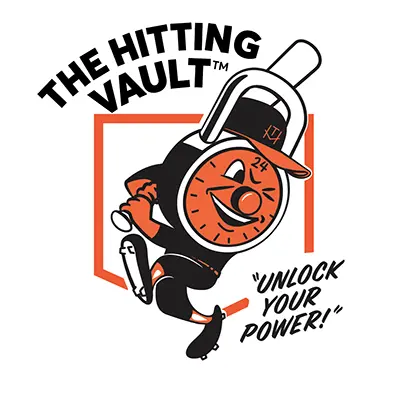
Join 93,000 Subscribers Who Love Hitting.
Get two articles delivered to your inbox each week.

AA vs AAA Baseball: Which Level Reigns Supreme?
Short answer is aa or aaa baseball better: AAA baseball is considered higher-level than AA due to the increased skill level of players, higher salaries, and closer proximity to Major League Baseball. However, both leagues provide quality competition and development opportunities for players.
Breaking it Down: How is AA or AAA Baseball Better?
There’s an old saying that goes, “If you ain’t first, you’re last.” But when it comes to minor league baseball, being number one may not necessarily mean you’re the best. So how do we determine whether AA or AAA baseball is better? Let’s break it down.
First off, let’s define what AA and AAA actually mean. Minor League Baseball has a hierarchy of levels that players progress through as they advance in their careers. The lowest level is Rookie ball, followed by Short-Season A, Low-A, High-A, AA (Double-A), and finally AAA (Triple-A). As the name suggests, Triple-A is considered the highest level of the minors while Double-A sits in between High-A and Triple-A.
So why might one argue that Double-A is better than Triple-A? One of the biggest factors to consider is player development. While both leagues serve as stepping stones for players on their way to the majors, some believe that Double-A provides a more challenging environment for young players to hone their skills.
At this level, pitchers can throw harder and have more control over their pitches which requires batters to be quick with reaction times. The speed of play in general tends to be faster at this level – ground balls zip across the infield at lightning speeds compared to more leisurely paced high fly balls in Triple A.
Additionally,this age group typically includes blue chip prospects who could turn into future top-tier MLB talents so they are playing highly competitive games against similar opponents making gaining experience crucial..
Another argument for why Double-AA baseball could conceivably been seen as “better” relates again to competition: there aren’t many teams/budgets competing fiercely after draft picks; therefore much stronger lineups are allowed fielded whereas pointlessly trying rate up nobodies from lower grades just because there isn’t another option doesn’t happen nearly as often .
On the other hand,talent does potentially suffer within the Double-A talent pool as players who have graduated from AA and are left in AAA to wait their opening in MLB can potentially weaken the overall competition compared to matches featuring all prospects or younger, green players.
Ultimately, whether Double-AA wins our hypothetical comparison contest is a matter of personal preference . Some people may prioritize player development while others might value seeing more experienced players battle it out on the field.
So there you have it – breaking down how AA and AAA vary when it comes to minor league baseball . Whichever level you prefer, one thing’s for certain: these leagues provide a great opportunity to watch up-and-coming talent before they hit it big in The Big League or fade away into “what could’ve been” obscurity—definitely worth checking out!
Is AA or AAA Baseball Better? A Step-by-Step Analysis
When it comes to minor league baseball, there are two leagues that stand out above the rest: AA and AAA. But which one is better? Is it worth watching a game in AA or should you shell out extra cash for tickets to AAA?
Let’s break down each league step-by-step for a definitive analysis.
Level of Competition
Both leagues serve as stepping stones towards Major League Baseball (MLB), so it makes sense that their level of competition would be similar. However, AAA tends to have more experienced players who are closer to being MLB-ready. These players have usually played in AA before moving up and may even have some major league experience under their belt.
So if you want to see top prospects on the cusp of making it big time, AAA might be your best bet. But don’t discount the talent in AA either – many current stars started their careers there.
Quality of Play
In general, both leagues offer high-quality baseball with skilled players showcasing their abilities night after night. However, because AAA has more experienced players and thus less inconsistency on average, the quality of play can be slightly higher than what you’d expect in an AA match-up.
That said, lower consistency doesn’t mean lesser quality-per se; at times unpredictability may add excitement or intrigue that looks amazing too!
Ticket Prices
This point deserves emphasis especially since budget consideration is always a part! While this demographic highly influenced by market dynamics still rules ticket story across various venues- In most cases and quite obviously enough-AA games tend to have cheaper admission costs compared to AAA games due varied reasons such as popularity among other factors cited depending on geographic region or team preference etcetera With nothing else taken into account other than price-we recommend saving some money here if not entirely unless getting value-additions become comparably important i.e., fan comfort levels regarding seating arrangements & dining experiences around arenas amongst other preferences..
Weather conditions influence certain places too like cities with popular tourist traffic, which can impact price difference in both leagues across franchises.
Fans love minor league baseball for its lively atmosphere full of energy and creative promotions. Whether you’re watching a game in AA or AAA, you can expect enthusiastic fans, fun between-innings activities, and one-of-a-kind ballpark food options.
AAA stadiums tend to be larger than those at the AA level due to higher market infrastructure and revenue making capacity too; This is because there are often fewer teams at the top-level compared to multiple more competitive sets below – so functionally having bigger stadia might also help accommodate more attendance besides some other amenities!
But while AAA parks may have extra frills like fireworks shows after games & bat dog nights – younger crowds who prefer intimacy could miss out on that personal touch if not well catered within organized fan zones where community spirit is stronger among similar interests! So it does kind go down-to individual priorities as well as varying preferences..
So Which League Is Better?
There’s no clear-cut answer to that question; depending upon your inclination regarding factors mentioned above : It ultimately comes down to what matters most when watching minor league baseball. Are you looking for high-quality play from experienced players ? Go watch an AAA game! If budget-consciousness rules supreme , purposefully saving money-glances towards better value-additions per se i.e., plush seating experiences then favoring a local team’s AA match-up wouldn’t hurt either …Or do you want a unique experience filled with wacky promotions and smaller stadium intimacy? Then head over to an A-team-Branding culture also plays a huge role here ; The charm associated with outfits rivalled by mascots-& promotion schemes highly effective sometimes only based-on collective imagination apart from outreach efficiencies employed by involved social media marketing techniques especially amidst pandemic constraints!
Whichever choice suits all round brand/campaign objective requires prioritization basics set right inclusive of campaign planning/market trends/flow of the game/however look on to go-to spreads and visualize that well rounded plan coming to fruition …and a hot dog, of course.
AA vs AAA Baseball: Your Top 5 FAQs Answered
Baseball is America’s favorite pastime, and for good reason. It’s a thrilling sport that demands skill, strategy, and athleticism from its players. But as you dive deeper into the world of baseball, you may come across various leagues like AA or AAA. If you’re new to the game or just looking to brush up on your knowledge, let us answer some of the most frequently asked questions about AA vs AAA baseball .
1. What do ‘AA’ and ‘AAA’ even stand for?
First things first: what do these letters even mean? In short, they represent different minor league levels beneath Major League Baseball (MLB). AA stands for “Double-A” while AAA stands for “Triple-A.” Both are classified by their level of talent and competition.
2. How does player development differ between AA and AAA?
While both leagues serve as a developmental program for future MLB stars, there are notable differences in how players advance through each league. Most notably, Triple-A teams typically consist of more experienced players who have already spent time in major-league ballparks compared to Double-A teams where there is a balance between prospects yet developing skills at this level.
3. Can fans expect to see top-tier talent in either league?
Absolutely! While geared towards developing young prospects still learning their trade or veterans trying get another shot back at the big show- Minor League Baseball has become an excellent training ground showcasing some of today’s biggest baseball stars such as Kris Bryant (Cubs), Francisco Lindor(Jays), Cody Bellinger(Dodgers) & Mike Trout(Angels) among others began their professional careers with one or many additional seasons spent bouncing around within farm systems dependent upon unique needs/circumstances placed upon them by respective organizations.
4.What are other key distinctions between these two minor-levels? One particular difference that sticks out is schedule length & rest required under variable circumstances – games & subsequent travel can seem grueling, especially when hitting a stretch of games without days off. Additionally, players in Triple-A typically receive more generous meal allowances and per diem while traveling compared with their Double-A counterparts- because let’s be real everyone loves good compensation for working hard!
5.Is there an advantage to playing in AA vs AAA?
While fans may identify AA as challenging due to the level of talent required at this competitive yet developmental stage – some prospective prospects prefer starting out or staying within Double-A given its geographical shorter travel distances from home which alleviates stress on relationships outside baseball ie friends, family.
Overall, it is crucial to understand how minor leagues work as they play a critical role not only in shaping but maintaining/bolstering the quality/depth necessary for continued growth & longevity within professional baseball circles. Whether you are watching your favorite MLB player polish up skills or witnessing future stars cut their teeth grinding through rough patches; each game played reverberates influence ultimately impacting final outcomes seen later down the road. So pay extra close attention next time AAA or even AA clubs hit town!
Leave a Comment Cancel reply
Save my name, email, and website in this browser for the next time I comment.
Travel Baseball
The Travel baseball program supports up to two teams per age starting at 8 years and ending at 14 years. One of the teams is designated as the AAA team and one is the AA team (the Blue team). Typically, the AAA team will recruit a portion of players from outside Saline, and will play a more competitive schedule than the AA team. Each team is run by the travel coach who coordinates all aspects of running the team, including scheduling and running its own budget.
Please review the House vs Travel Comparison Chart for more specific information.
To nominate a travel coach for the 2023 season, send email to Travel Baseball VP, Ryan Sontag, by Friday, July 1, 2022. Include the coach's name, email & phone contact information if you have it, and the age level of the travel team as it will be in 2023.
2022 Travel Baseball Coaches
Please reach out directly to the listed Head Coaches for team inquires.
Ryan Sontag
VP of Travel Baseball
Corey Memering
Chris pasik.
10U Hornets
Rich Spencer
10U Hornets Blue
Joe Mierkowicz
11U Hornets
Matt Griffin
11U Hornets Blue
Nicholas Thompson
12U Hornets
14U Hornets
Mike Gehringer
14U Hornets Blue
Page Search
Travel Baseball’s
Premier d2/d3, world series, tournament, choose your location.
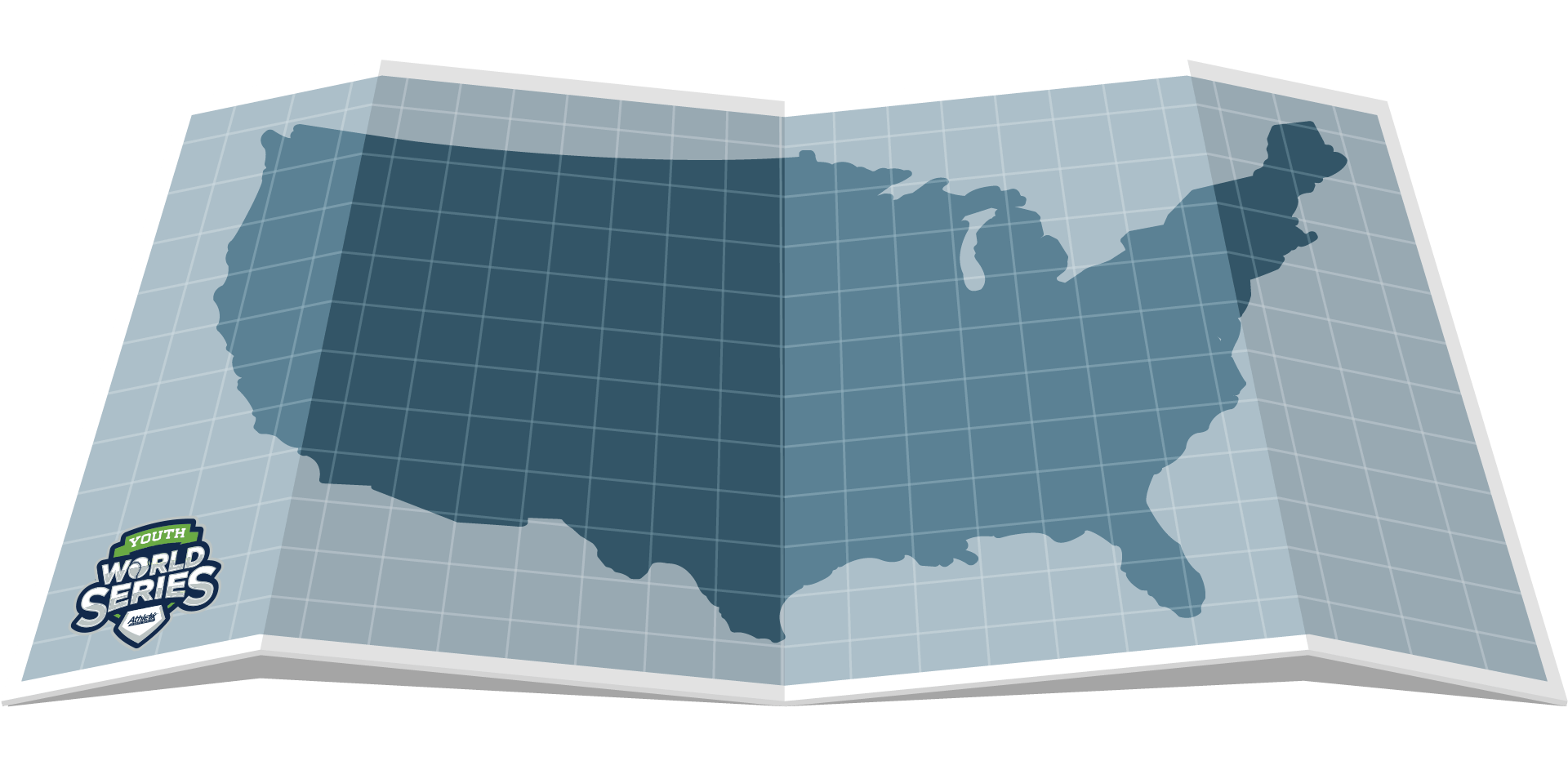
Daytona Beach, FL
June 19-23, 2024, ocean city, md, june 26-30, 2024, houston, tx, july 3-7, 2024, asheville, nc, july 10-14, 2024, cincinnati, oh, july 17-21, 2024, july 25-28, 2024, myrtle beach, sc, august 1-4, 2024, lake of the ozarks, june 12-16, 2024, world series event highlights, vacation destinations.
The Youth World Series is held at family vacation destinations close to water parks, thrill parks, beaches and more, giving your team’s families an extended weekend of games & FUN!
5 GAME GUARANTEE
Each team will play 5-9 games (weather permitting) over the course of the 4 day tournament giving you plenty of Baseball against similar competition!
ALL-TOURNAMENT TEAMS
Opposing coaches will nominate players from your team to be named to the Youth World Series All-Tournament Team. All nominees will receive special invitations to the prestigious Baseball Youth All-American Games held in August and late December / early January!
D2 / D3 ONLY
Finally, a World Series made for your team! ONLY D2 (Lower level AAA, AA, Silver, intermediate) or D3 (A, Bronze, beginner) level teams are allowed to participate. No D1 (Elite, Major, Gold, advanced) teams allowed. We use the popular Baseball Youth DivLevel classification system and moderate entries to ensure like competition!
UNIQUE DOUBLE-SIDED BRACKET
Teams compete in 3 pool play games before being seeded in unique double sided brackets, giving your team a chance for the Gold, Silver or Bronze championship! Click Here To View The Unique Bracket!
A WORLD SERIES MADE FOR YOUR TEAM,
D2 & d3 (aa & a) level teams only.
The Youth World Series is THE tournament for your D2 (lower AAA, AA) or D3 (A) level travel baseball team. We use Baseball Youth’s DivLevel Team Classification System . Spend a fun packed, 4 day weekend at some amazing family vacation destinations at some of the best synthetic turf facilities in the country!
9U, 10U, 11U, 12U, 13U, 14U, 15U, and 16U baseball teams from around the country will compete in a national championship / world series environment featuring skills competitions, 5-7 games with unique double sided bracket play, Gold, Silver and Bronze brackets and more. Played close to water parks, thrill parks, and beaches!
National coverage of the Youth World Series will be provided by Baseball Youth, youth baseball’s #1 source for media coverage with nearly 400,000 social media followers from around the country and world!
LEARN MORE ABOUT THE UNIQUE
Double-sided bracket, who's coming.
The 2023 Youth World Series saw more than 470 teams! With three new locations being added we expect to sell out in all locations! Stay tuned for our Who’s Coming List – coming soon!
The World Series experience
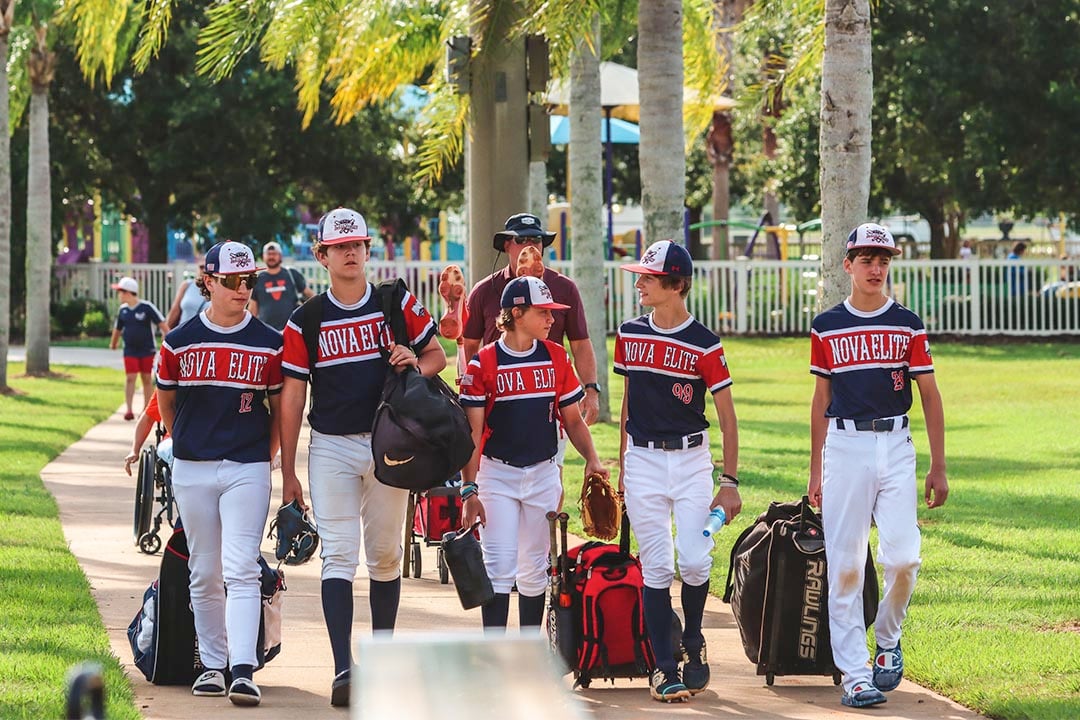
CHECK IN & POOL PLAY BEGINS
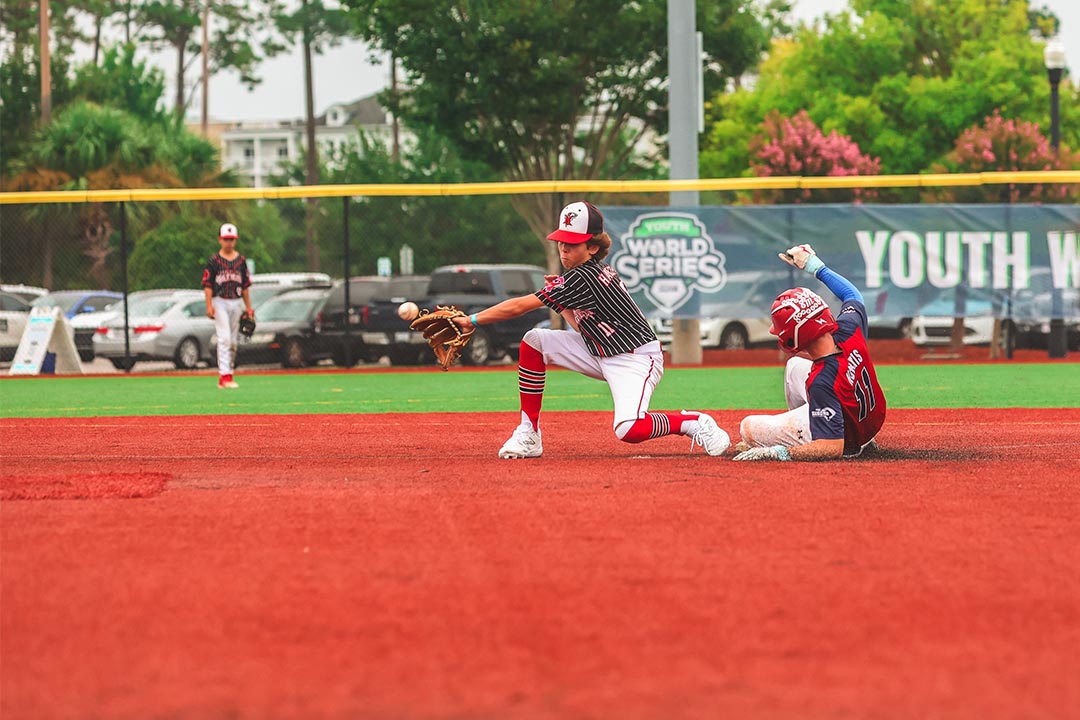
POOL PLAY & SKILLS COMPETITIONS
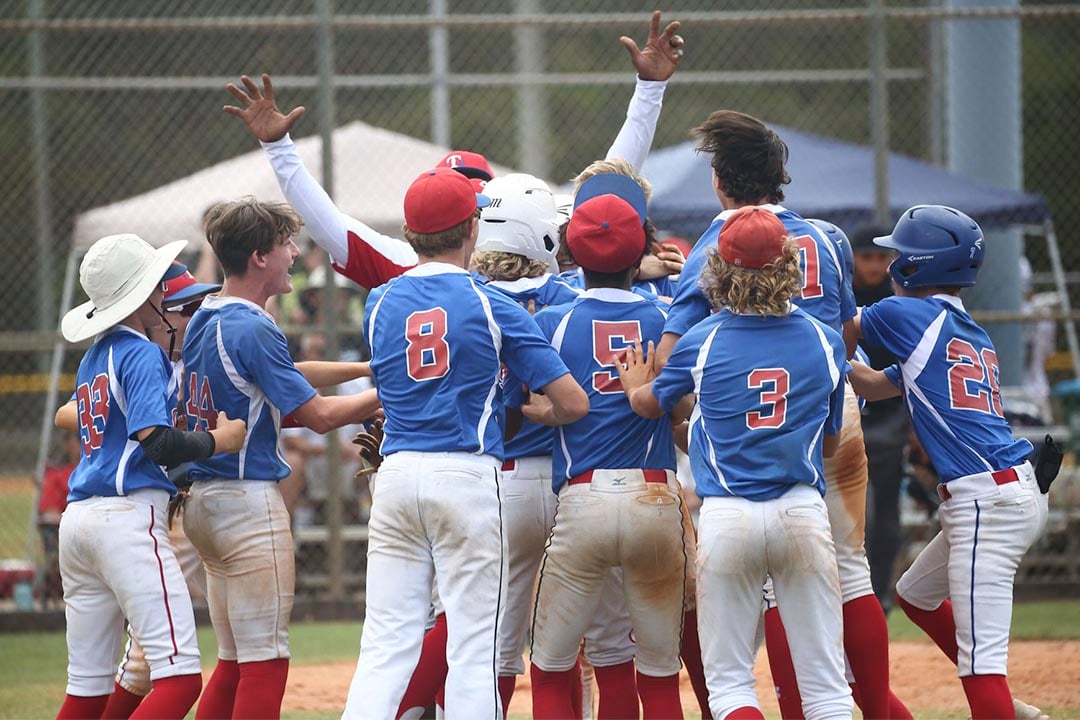
POOL PLAY CONCLUDES, BRACKET PLAY BEGINS
Your team will wrap up their pool play games and depending on seeding, will begin double-sided bracket play. The Youth World Series features a unique double-sided bracket with Gold, Silver and depending on number of teams, Bronze and Consolation brackets as well, giving your team numerous opportunities to take home a trophy!
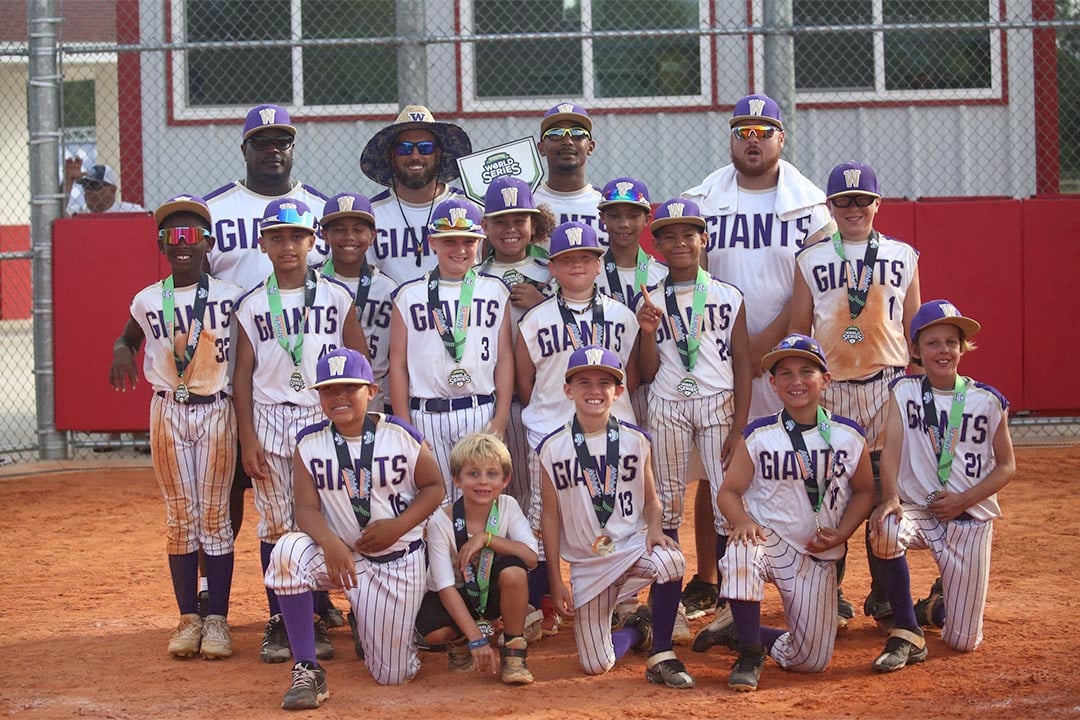
IT’S CHAMPIONSHIP DAY!
Your team will compete in either the Gold, Silver, Bronze or Consolation bracket! Youth World Series All-Tournament teams will be recognized and special Baseball Youth All-American Game invitations will be handed out! It will be a great time to celebrate your team’s incredible experience at the Youth World Series!
- @youthworldseries
Current Instagram feed

Download The Youth World Series Info Packet Now!
And receive a special offer for your team, online store.
- Phone: 800.559.ATHX (2849)
- TEXT: (502) 385-3268
- EMAIL: [email protected]
Social Media
- @YouthWorldSeriesRecruitingTeam
© Athletx Sports Group, LLC. All Rights Reserved.
Receive a special offer, download your free info pack and win your team a $1000 rebate, wait before you go..., don’t forget to download your free info pack and win your team a $1000 rebate.
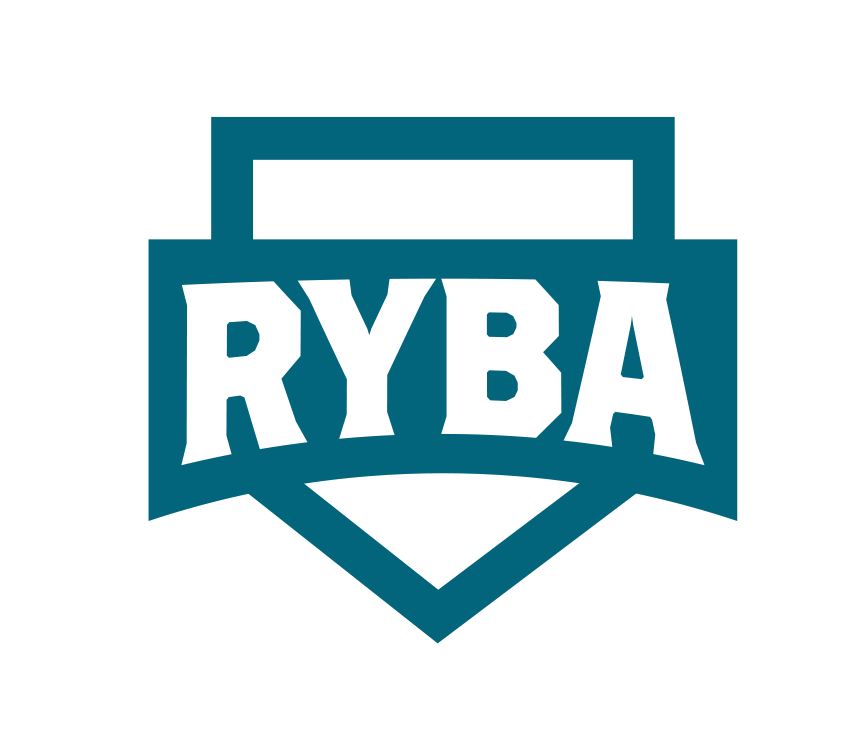
The Travel Program is designed to provide players with the knowledge and skills necessary to eventually play baseball at the high school level. Teams meet multiple times per week for games or practice.
Age of Players
Your child's level of play is determined by their age on April 30, 2024. Players that are young for their grade have the option of signing up for the age group determined by their birthday OR playing with their 2022-2024 academic year grade.
2024 Season Information
- Levels of play by age: Our ability to field teams at each division (AAA/AA/A) is determined by multiple factors including the number of players who register for each age level in RYBA travel, tryout scores, past season regular season record and tournament results, and MBL rules. 9U only offers AAA and AA levels. 10U-13U offers AAA, AA, and A divisions. 14U offers AAA/AA divisions. MBL also offers a combined 14A/15A division.
- 14U teams will not be organized around High Schools for 2024. Players will be assigned to teams based on tryout performance.
- Players who are not assigned to a travel team will be accommodated within the Southern Minny program, and offered an opportunity to have their tryout scores considered for placement on a tournament team. Please see the Southern Minny page for additional details.
- Travel fees are split into a base fee and a travel team fee. The base fee includes the tryout fee plus the cost for Southern Minny Registration. The travel team fee is assessed after the players are assigned to a travel team. RYBA travel fees include uniform items (Hat, two jerseys), MBL team registration, and regular season tournament registration.
- Travel Tryouts will be held at the RCTC Dome on 2/19. Specific hours for each age level will be shared with registered players at the close of registration. Travel tryout make-ups will be held on 3/3.
Late Registration
Travel registration is closed. Email [email protected] to inquire about late registration.
2024 Travel Tourney Schedule
2024 travel faq.
Northern Virginia Travel Baseball League
Where competitive players develop.
Join AAA today Membership gives you access to Roadside Assistance, Deals, Discounts, and more.
- Add Members
- Gift Membership
- Member Benefits Guide
- The Extra Mile
- Renew Expires in 28 days

AAA Visa Signature® Credit Cards
Earn a $100 Statement Credit
After spending $1,000 on your card within 90 days of account opening.

- Advice back All Advice Travel Auto Money Home Life
- Destinations back All Destinations Northeast States Southeast States Central States Western States Mid-Atlantic States National Parks Road Trips International Travel Inspiration
- Connect back All Connect Community Stories Authors & Ambassadors
- Guides back All Guides Doing Your Taxes Protecting Your Valuables Winter Driving Buying and Selling a Car Buying and Selling a Home Getting Organized Home Improvement Improve Your Finances Maintaining Your Car Saving Money Staying Healthy Traveling
- Series back All Series AAA World Member News AAA's Take KeeKee's Corner AAA Traveler Worldwise Foodie Finds Good Question Minute Escapes Car Reviews
- Sports Travel and Tours

Whether you want to customize a getaway to your favorite cities and stadiums or you want to be there for baseball's biggest events - Hall of Fame Weekend, All Star Game, or Spring Training - you'll find the perfect package.

2023 Baseball Hall of Fame Packages
Baseball Hall of Fame, Cooperstown, NY Friday, May 26, 2023 to Sunday, May 28, 2023 The National Baseball Hall of Fame and Museum will salute the start of the summer season with this Cooperstown tradition, Hall of Fame Classic Weekend. In addition to the traditional Hall of Fame Classic events this package includes a golf outing led by Hall of Fame members at the Leatherstocking Golf Course on Otsego Lake on Sunday and much more.
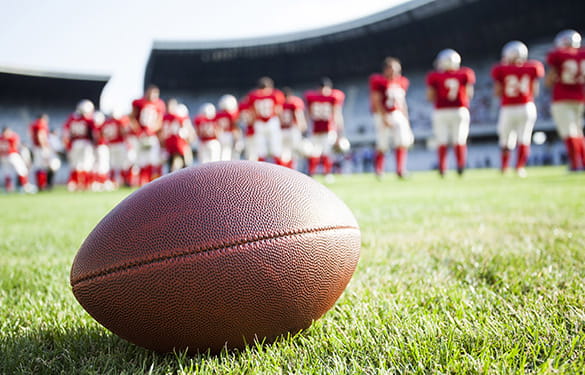
Football Regular Season Gridiron Getaways
The roar of the crowd... The crunch of a good sack... Pre-game tailgating... Football is a uniquely American event, and we can help you experience it. Travel when you want, sitting in the seats of your choice, staying in the type of hotel you like, and living the dream of all football fans!
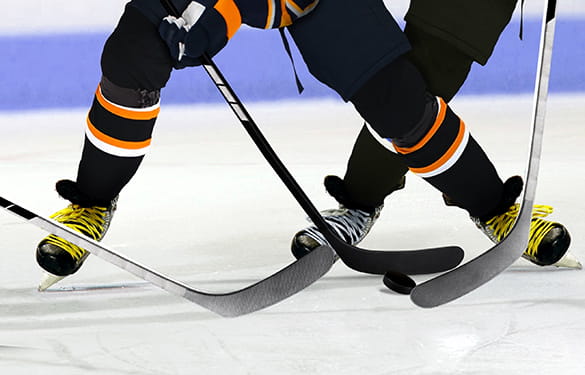
NHL Hockey Regular Season Getaways
See your favorite team put the puck in the net! If you're looking for on-ice action, we can put you in the middle of it all. From puck-drop to the final minute of play, experience a puck-head's dream vacation.

Auto Racing
Experience speed at your favorite track
Packages are still available. Watch your favorite driver catch the checkered flag. Don’t wait until the final lap – reserve your seat now!
More Travel
Planning tips and tools.
At AAA we know that planning and preparation can be the difference between a dream vacation and a travel nightmare.
View Tips & Tools Maps , TourBooks and TripTiks Digital Tourbook® Guides
Travel Insurance
Life is unpredictable. With travel insurance, you can protect yourself from paying for a trip you’re unable to take.
International Driving Permits
Translates your license into 10 languages.
Luggage & Accessories
Save on lightweight luggage, travel accessories, travel books and much more.
Welcome to AAA
To enjoy customized local content, please enter your ZIP Code below.
Limited Time Offer!
Please wait....

Russia's Nuclear Deterrent Command Center Imperiled by Winter Freeze—Report
A Russian nuclear deterrent command center in Moscow has been imperiled by power outages that have impacted more than one-quarter of the region's cities amid freezing temperatures, a Russian Telegram channel has reported.
The VChK-OGPU outlet, which purports to have inside information from Russian security forces, reported that the 820th Main Center for Missile Attack Warnings—part of the Russian Space Forces, a branch of the country's Aerospace Forces—near Solnechnogorsk in Moscow is without power.
It serves as the space forces early warning network against potential ballistic missile attacks.
The development comes as Russians are reported to be suffering from power outages in their homes in the Moscow region caused by technical issues at plants amid subzero temperatures.
On January 4, a heating main burst at the Klimovsk Specialized Ammunition Plant in the town of Podolsk, which is about 30 miles south of central Moscow. Since then, tens of thousands of Russians are reported to have no heating in their homes.
Affected areas include the cities of Khimki, Balashikha, Lobnya, Lyubertsy, Podolsk, Chekhov and Naro-Fominsk, a map published by a Russian Telegram channel and shared on other social media sites shows.
Other Russian media outlets reported that in Moscow, residents of Balashikha, Elektrostal, Solnechnogorsk, Dmitrov, Domodedovo, Troitsk, Taldom, Orekhovo-Zuyevo, Krasnogorsk, Pushkino, Ramenskoye, Voskresensk, Losino-Petrovsky and Selyatino are also without power.
The Telegram channel said that at the 820th Main Center for Missile Attack Warnings, "the crew...is on duty around the clock."
"It is here that the decision on a retaliatory nuclear strike is executed," the channel said.
Newsweek could not independently verify the report and has reached out to the Russian Defense Ministry by email for comment.
Power outages have also been reported in Russia's second-largest city, St. Petersburg, in the country's western Voronezh region, in the southwest city of Volgograd, and in Rostov, which borders Ukraine, a country that Russia has been at war with since February 24, 2022.
On Sunday, two shopping malls in St. Petersburg were forced to close because of problems with light and heating, reported local news outlet 78.ru. Hundreds of other homes in the city have had no electricity, water or heating for days amid temperatures of -25 C (-13 F).
Russian authorities have also been forced to compensate passengers of a train that ran from Samara to St. Petersburg (a 20-hour journey) without heating during -30 C (-22 F) temperatures. Videos circulating on social media showed carriage windows frozen over. A passenger also said the toilet didn't work during the trip because of frozen pipes.
Do you have a tip on a world news story that Newsweek should be covering? Do you have a question about the Russia-Ukraine war? Let us know via [email protected].
Related Articles
- Russia Maps Show 25% of Moscow Without Power Amid Winter Freeze 'Emergency'
- Serbian Mercenary Turns on Russian Leaders: 'They Treat Us Like Cattle'
- Winter Freeze Threats Come Back To Bite Russia As Power Outages Spread
Start your unlimited Newsweek trial
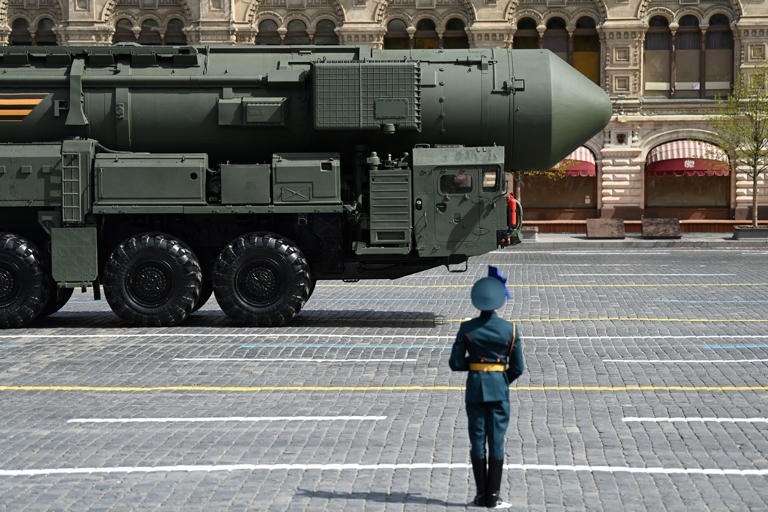
Claudia Looi
Touring the Top 10 Moscow Metro Stations
By Claudia Looi 2 Comments

Komsomolskaya metro station looks like a museum. It has vaulted ceilings and baroque decor.
Hidden underground, in the heart of Moscow, are historical and architectural treasures of Russia. These are Soviet-era creations – the metro stations of Moscow.
Our guide Maria introduced these elaborate metro stations as “the palaces for the people.” Built between 1937 and 1955, each station holds its own history and stories. Stalin had the idea of building beautiful underground spaces that the masses could enjoy. They would look like museums, art centers, concert halls, palaces and churches. Each would have a different theme. None would be alike.
The two-hour private tour was with a former Intourist tour guide named Maria. Maria lived in Moscow all her life and through the communist era of 60s to 90s. She has been a tour guide for more than 30 years. Being in her 60s, she moved rather quickly for her age. We traveled and crammed with Maria and other Muscovites on the metro to visit 10 different metro stations.

Arrow showing the direction of metro line 1 and 2

Moscow subways are very clean
To Maria, every street, metro and building told a story. I couldn’t keep up with her stories. I don’t remember most of what she said because I was just thrilled being in Moscow. Added to that, she spilled out so many Russian words and names, which to one who can’t read Cyrillic, sounded so foreign and could be easily forgotten.
The metro tour was the first part of our all day tour of Moscow with Maria. Here are the stations we visited:
1. Komsomolskaya Metro Station is the most beautiful of them all. Painted yellow and decorated with chandeliers, gold leaves and semi precious stones, the station looks like a stately museum. And possibly decorated like a palace. I saw Komsomolskaya first, before the rest of the stations upon arrival in Moscow by train from St. Petersburg.
2. Revolution Square Metro Station (Ploshchad Revolyutsii) has marble arches and 72 bronze sculptures designed by Alexey Dushkin. The marble arches are flanked by the bronze sculptures. If you look closely you will see passersby touching the bronze dog's nose. Legend has it that good luck comes to those who touch the dog's nose.

Touch the dog's nose for good luck. At the Revolution Square station

Revolution Square Metro Station
3. Arbatskaya Metro Station served as a shelter during the Soviet-era. It is one of the largest and the deepest metro stations in Moscow.

Arbatskaya Metro Station
4. Biblioteka Imeni Lenina Metro Station was built in 1935 and named after the Russian State Library. It is located near the library and has a big mosaic portrait of Lenin and yellow ceramic tiles on the track walls.

Lenin's portrait at the Biblioteka Imeni Lenina Metro Station

5. Kievskaya Metro Station was one of the first to be completed in Moscow. Named after the capital city of Ukraine by Kiev-born, Nikita Khruschev, Stalin's successor.

Kievskaya Metro Station
6. Novoslobodskaya Metro Station was built in 1952. It has 32 stained glass murals with brass borders.

Novoslobodskaya metro station
7. Kurskaya Metro Station was one of the first few to be built in Moscow in 1938. It has ceiling panels and artwork showing Soviet leadership, Soviet lifestyle and political power. It has a dome with patriotic slogans decorated with red stars representing the Soviet's World War II Hall of Fame. Kurskaya Metro Station is a must-visit station in Moscow.

Ceiling panel and artworks at Kurskaya Metro Station

8. Mayakovskaya Metro Station built in 1938. It was named after Russian poet Vladmir Mayakovsky. This is one of the most beautiful metro stations in the world with 34 mosaics painted by Alexander Deyneka.

Mayakovskaya station

One of the over 30 ceiling mosaics in Mayakovskaya metro station
9. Belorusskaya Metro Station is named after the people of Belarus. In the picture below, there are statues of 3 members of the Partisan Resistance in Belarus during World War II. The statues were sculpted by Sergei Orlov, S. Rabinovich and I. Slonim.

10. Teatralnaya Metro Station (Theatre Metro Station) is located near the Bolshoi Theatre.

Teatralnaya Metro Station decorated with porcelain figures .

Taking the metro's escalator at the end of the tour with Maria the tour guide.
Have you visited the Moscow Metro? Leave your comment below.
January 15, 2017 at 8:17 am
An excellent read! Thanks for much for sharing the Russian metro system with us. We're heading to Moscow in April and exploring the metro stations were on our list and after reading your post, I'm even more excited to go visit them. Thanks again 🙂
December 6, 2017 at 10:45 pm
Hi, do you remember which tour company you contacted for this tour?
Leave a Reply Cancel reply
You must be logged in to post a comment.
Please go to the Instagram Feed settings page to create a feed.

IMAGES
COMMENTS
Many baseball players you see playing in the MLB, Major League Baseball, have spent some time in their careers playing for a team in the MiLB, Minor League Baseball. The MiLB is where A, AA, and AAA come from, the different levels of playing in the MiLB. We will explain the differences between each level, including
USSSA Baseball offers programs for four levels of play. Major and AAA programs are national programs that culminate in a World Series. The AA program is a regional program ran by the participating states that culminates with 'AA' World Series opportunities. The A level is for recreational teams and now offer 'A' level World Series events.
Division 1 (abbreviated D1) is the highest level of play within Baseball Youth's DivLevel classification system. This level is best suited for teams considered as Major/All-Levels of AAA, Gold or Elite/Advanced. Teams classified as D1 should be playing the majority of their games against other regionally strong and/or nationally ranked opponents.
Travel baseball levels refer to the various competitive divisions or tiers in youth baseball that involve teams traveling to compete against others from different regions. This typically includes age-based divisions, such as 8U, 10U, 12U, etc., and advanced levels like AAA or Major. The skill level and competitiveness increase as players move ...
Mid-market teams possible pulling players from more than one city, or Academy teams; teams that have played together for a while; teams with over .667 records vs. AA teams; teams with .500 records vs. other AAA teams; teams that may have won a tournament or dominated the competition at the AA level. Majors: Experienced teams, the top 10-15% ...
As a player, being a member of a travel baseball team is a thrilling experience. Following are a few pointers that can help you relax and perform at your best, making joining a baseball team much simpler. 1. Be On Time (Or Before Time) First of all, plan to arrive a few minutes early.
Local Travel Teams: For beginners starting their journey through travel baseball. The games they play are mostly local or within a close driving distance. Practices only happen a few times a week, and games during the weekend. 2. Regional Travel Teams: For players with more experience and higher skill levels.
The AA and AAA levels often receive the most attention from the average baseball fan. The biggest difference between AA and AAA baseball is that AAA is the highest level of the minor leagues and AA is the second highest. There are several other subtle differences between the two levels that must be discussed in order to fully grasp the ...
DivLevel is made up of 3 very easy-to-understand division levels: Division 1 (D1), Division 2 (D2) or Division 3 (D3) as follows: D1 - Major/All-Levels of AAA, Gold, Elite/Advanced, Competitive Nationally and Super-Competitive Regionally. D2 - Medium AA/High AA, Silver, High-Level Intermediate, Competitive Regionally and Super-Competitive ...
The specific answer varies, but the typical range of cost for participating in travel baseball is between $500 and $2,500 per year. That said, you can end up spending a lot more than that. Back in 2011, CBS News reported that one Georgia family paid $4,000 per year for their 9-year-old son's travel team.
Short answer is aa or aaa baseball better: AAA baseball is considered higher-level than AA due to the increased skill level of players, higher salaries, and clo ... games & subsequent travel can seem grueling, especially when hitting a stretch of games without days off. Additionally, players in Triple-A typically receive more generous meal ...
The Travel baseball program supports up to two teams per age starting at 8 years and ending at 14 years. One of the teams is designated as the AAA team and one is the AA team (the Blue team). Typically, the AAA team will recruit a portion of players from outside Saline, and will play a more competitive schedule than the AA team.
The Youth World Series is THE tournament for your D2 (lower AAA, AA) or D3 (A) level travel baseball team. We use Baseball Youth's DivLevel Team Classification System. Spend a fun packed, 4 day weekend at some amazing family vacation destinations at some of the best synthetic turf facilities in the country! 9U, 10U, 11U, 12U, 13U, 14U, 15U ...
AAA, AA, and A players compete against community-based teams from across the state. Players who do not wish to tryout for a "traveling" team, or do not successfully evaluate for a AAA, AA, or A team, will be placed in the Southern Minny program. ... Travel Baseball includes 14-16 league games and 4-5 tournaments throughout the summer. Travel ...
What is AAA Baseball (Triple-A) AAA baseball is the highest level of Minor League baseball. As of 2021, there are 30 AAA teams in the league. The leagues of AAA consist of twenty teams in the Triple-A East and ten teams Triple-A West. Triple-A baseball has more movement than Double-A because big-league teams send struggling or injured players ...
Team Classifications Major Classification Top 10% - 15% of the teams in the state. Best teams in the state Can Compete with Major teams in region. AAA Classification Upper middle 20% - 35% of the teams in the state. Traveling teams Tryout teams AA Classification Lower middle 30% - 45% of the teams in the state. Limited travel schedule Players from same local area.
If you manage travel baseball teams looking for players we encourage you to take a few moments to create your account and add your organization, teams and upcoming events! Contacts. Address: 4600 Mark IV Pkwy. #163222 Fort Worth, TX 76161. Email: support[@]selectbaseballteams.com ...
Umpires for 8U - 12U Games. Umpires Needed - anyone interested in umpiring 8-12u baseball games in the NVTBL, please contact Lisa Lombardozzi at [email protected] or call: (571) 765-1561.
Luggage & Accessories. Save on lightweight luggage, travel accessories, travel books and much more. Work with AAA to find a travel package that will let you see some of your favorite athletes. Browse packages for baseball, football, hockey, and more.
A Russian nuclear deterrent command center in Moscow has been imperiled by power outages that have impacted more than one-quarter of the region's cities amid freezing temperatures, a Russian ...
Rome2Rio is a door-to-door travel information and booking engine, helping you get to and from any location in the world. Find all the transport options for your trip from Elektrostal to Moscow right here. Rome2Rio displays up to date schedules, route maps, journey times and estimated fares from relevant transport operators, ensuring you can ...
Central Air Force Museum The Central Air Force Museum, housed at Monino Airfield, 40 km east of Moscow, Russia, is one of the world's largest aviation museums, and the largest for Russian aircraft. 173 aircraft and 127 aircraft engines are on display, and the museum also features collections of weapons, instruments, uniforms (including captured U2 pilot Gary Powers' uniform), other Cold War ...
Revolution Square Metro Station. 3. Arbatskaya Metro Station served as a shelter during the Soviet-era. It is one of the largest and the deepest metro stations in Moscow. Arbatskaya Metro Station. 4. Biblioteka Imeni Lenina Metro Station was built in 1935 and named after the Russian State Library.